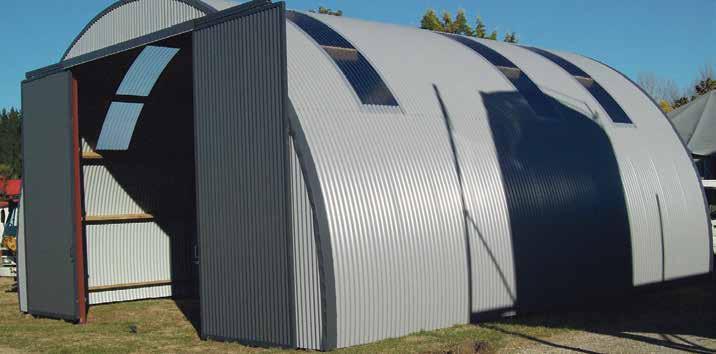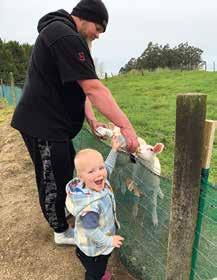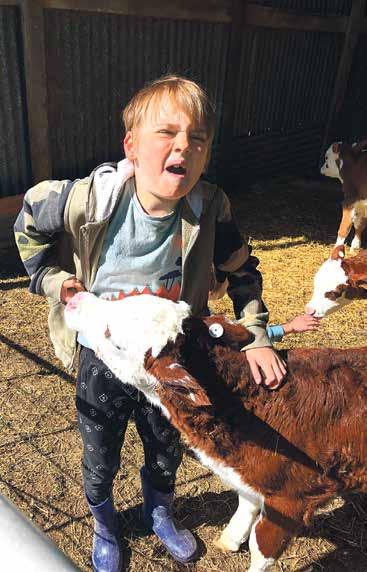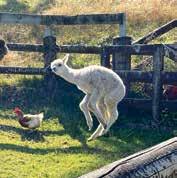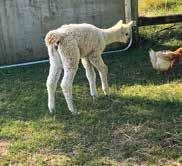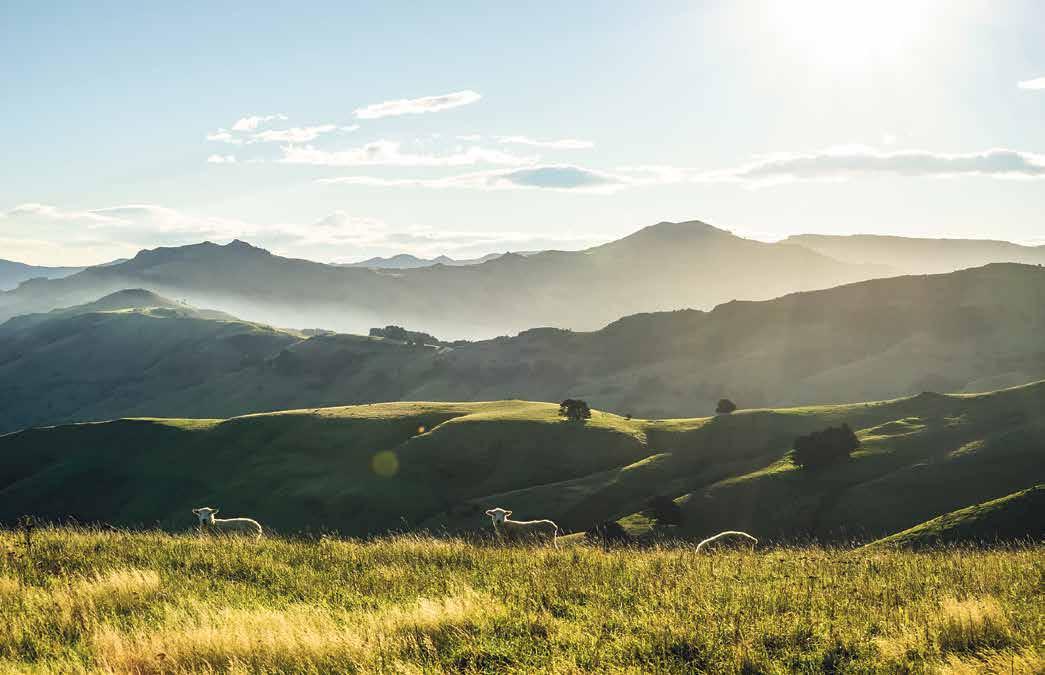
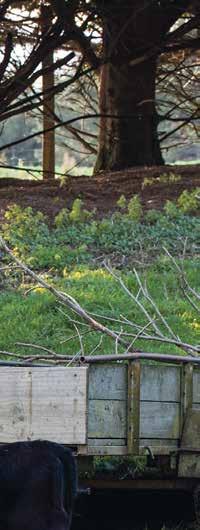


































































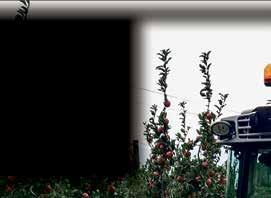



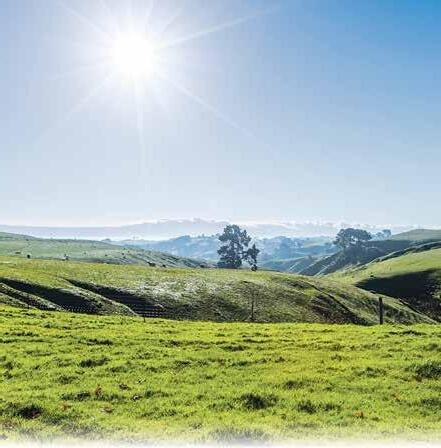
“You’ve never been to Field Days (pregnant pause) Never? (disbelief) Ever? (disgust).”


e outrage was palpable. Because the good folk I work with are Coast & Country News acolytes –they know a Holstein from a Hereford, and a John Deere from a New Holland.


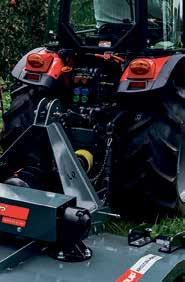
But no I haven’t been to Field Days. And to reinforce the point, I threw in the fact I have never even owned a pair of gumboots.
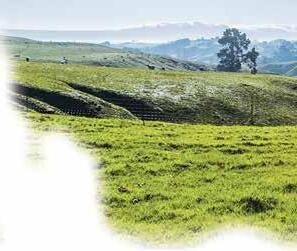

Heaven forbid!
It was like I’d told them I had just tested positive for foot and mouth, that I was philosophically in tune with the A ordable Water Reforms, or that as a card-carrying member of Federated Farmers I would be voting Labour on Saturday, October 14. Or all three.

Heaven forbid!
“ ere are tractors, and stu … and sheep shearing.”
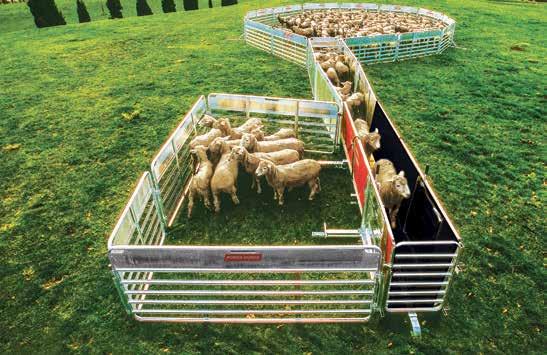
What a sales pitch. It was the “stu ” that swung it for me, the thrill of the unknown and unforeseen.


Coming from a 17th oor apartment in Auckland I was going to say the agrarian life and I never connected. Well we did, but it was more of an unfortunate collision.
As a schoolboy I learned to drive on a red Massey Ferguson in the 1960s – one like Sir Ed went to the South Pole on in 1958. But he got



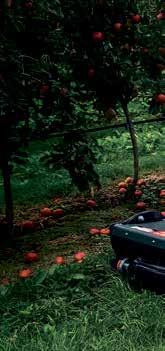





more press than I did if I recall. en a succession of unfortunate events saw me scuttling back to the city. I was fed sweatbread patties for lunch – sweetbreads, pancreas and thymus glands. As soon as I discovered I had been eating o al I barfed, regurgitated the patties in the garden by the backdoor. e same afternoon I fainted for the rst and last time when the farmer pulled a hogget from the house paddock and unceremoniously slit its throat. en a couple of days later I tore down three chain of new fencing when I did a tight turn on the Massey Ferguson while tedding.


I remember the sound …. ping, ping, ping, ping. It sounded quite melodic – the opening barrage of an overture – but it was also an expensive sound.



Anyhow at the promise of seeing “stu ” at Fieldays I am committing to going, I will join the 140,000 people of the soil expected at Mystery Creek this year. I have checked out some appropriate kit – some RM Williams burnished Macquarie boots at $899 and some $89.99 Red Bands in case it rains.
And that’s before the checked sportscoat, checked annel shirts and $140 Swanndri moleskins. Bloody hell – you’d need the income of a farmer to even look like one.
Bring on the “stu .”
Hunter Wells

Demand for homekill meat across the country is increasing, with businesses putting it down to the rising cost of food. However, rules around homekill are pushing people to look at hobby farming, or at least owning one animal, to keep their costs down.

Waikato homekill service Wally Smith reports business is up 30 per cent compared to this time last year.

Increased cost
Wally Smith’s Barbara Lankow believes the cost of meat at supermarkets has forced customers to look for alternative options, despite having to up their own prices due to in ation. “We were a bit worried with all the price increases that everyone would go away from it, but we seem to be getting a little bit more now that the price is so dear in the supermarket.
“We found that even with our prices being up, people are still going for it, so it’s good at





our end.” Homekill is the slaughtering and butchering of farmed animals for your own use and consumption. It can be done by the person who owns the animal, or by a listed service provider. However, it is illegal to sell or trade homekill meat.
Under the Animal Products Act, a person must own the animal for a total of 28 days before it is butchered by a homekill service. is leaves only the animal owner, or their direct family, farmworkers and their direct family able to consume the end product.
Barbara says while hunting for deer and pigs is also an option, many are nding ways to ensure they have their own quality meat for reasonable pricing.
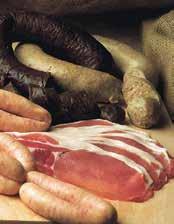
“A lot of farmers are giving a lot more to their brothers and sisters and family. But I think a lot of people will most probably be looking at buying animals and trying to graze them somewhere and do it that way.”
She says the price to do this with a beast, once you have included the cost of the homekill, would be around $2000. However, sheep are a lot cheaper to initially buy.
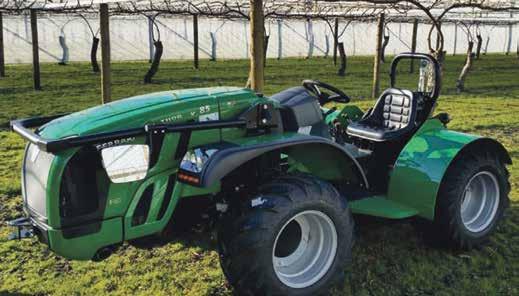
“I’ve noticed a lot of people are trying to buy sheep – because sheep are normally about that $180-$200 … then you’re cutting up on top of that.
“It’s not as much, so I’m getting a lot of people ringing up and trying to nd them.”
Other businesses spoken to by RNZ also said demand had increased – one saying the increase started before Christmas and had not slowed down.
e owner of the business –who chose not to be named – said she had been at-out, believing it to be a direct result of the cost of meat in supermarkets.
 Leah Tebbutt/RNZ
Leah Tebbutt/RNZ
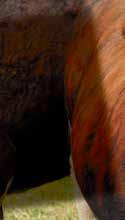
After 12 years at the helm of the NZ Avocado Growers’ Association, Jen Scoular is stepping down.
“Jen has served us tirelessly over the past 12 years and her achievements along the way are many. When Jen took up the role after a four year term as a trade diplomat in Hamburg, Germany, our industry was struggling and lacked engagement, communication and systems, which gave Jen a lot to focus on,” says the association’s chair Linda Flegg.
“Under her leadership industry value has increased from $82m in 20112012 to $231m in 2021, and the New Zealand market value from $19m to $62m in 2021-2022.
“During her tenure the industry successfully achieved market access for avocados into both the China and India market, joined the biosecurity partnership with the government and achieved the rst horticulture primary growth partnership in 2014, which
nished in December 2022.
“ e successful primary growth partnership, with Crown investment allowed real change in how the industry operated, with strong external investment across a number of areas, where investment from grower levies alone was not enough to make the required change.”
e PGP required the industry to put together a ve-year plan, and later a business plan to extend the programme and funding for a further three years.
ose strategic plans were reviewed and approved by an independent panel of experts, and the PGP itself had a MPI/industry steering group with an independent chair.
at external, independent contribution to the strategy and governance of our sector provided additional, independent thinking, and ensured the plan optimised delivery for the industry.
“She has left a legacy that will require some big shoes to ll.”
irty-three-year-old Aleisha Broom eld has won the New Zealand Dairy Industry Awards

2023 Waikato Share Farmer of the Year award and four merit awards. It caused a bit of a stir as she is the rst solo female farmer to win the category in Waikato.

“I’m not at all hung up on that fact. e only thing I think it illustrates is that farming can be a successful and rewarding career for any gender, so if me winning reinforces that, then I am happy,” says Aleisha.
“I just appreciate the recognition of my hard work.”
She was runner-up in the same
category in 2022, and wanted to enter again and use the experience to work on her business and any weaker areas that were identi ed last year.



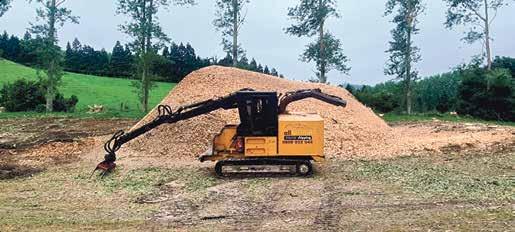

Her Dad’s family were always farming, and Aleisha believes farming is in her DNA. ere is a long line of farmers on her father’s side. Her grandfather bought her mum’s family out from England, and they moved into farming by accident and absolutely love it.
“ ey stopped in Springdale to repair a at tyre, got talking and my grandfather was told to go farming as it’s a great lifestyle. So they stayed in the area and the rest is history.”
Aleisha’s dad passed away recently and her mum still owns three farms in the Morrinsville area.


“I grew up on farms and was very involved as a young child, but my mum was a schoolteacher and placed education as a top priority.”
is resulted in a Bachelor of Agricultural Science with First Class Honours from Lincoln University, followed by a New Zealand Diploma in Agri-business. Aleisha then worked as a DairyNZ consulting o cer and a Primary ITO tutor.. “With my family background and the fact that I absolutely love cows and working with animals, I always knew I wanted to end up farming.”
Aleisha started her current position of 50/50 herd owning sharemilker on the Dibble Family’s Tauhei Farms Ltd 86-hectare Te Aroha Farm in June 2019. With Michelle Crawford, her assistant herd manager, they milk 245 cows.

“Calving is one of my favourite times of year and I take pride in having an 82 per cent six-week in-calf rate, growing exceptional youngstock, excellent pasture management, and having happy healthy cows with low SCC and high production. “I’m always looking for ways to develop and I’ve been doing lots of training to improve my business and keep motivated.”
Her business strengths and excellent cost control has allowed her to make strong pro ts each year and build equity.


eir own farm
Aleisha initially met her partner, James Courtman, about 10 years ago at Young Farmers. ey reconnected more recently while going to sur ng for farmers at Waihi Beach and became a couple. ey still try and go sur ng each week during summer and see it as important time away from farming.

youngsters at local high schools. “In the future it would be great to do Open Gate days with students from local schools.”
But for the next year or so, Aleisha and James will be heads down and working hard to get their farms established.
James has been a contract milker and is currently involved in two equity partnerships. He has also built up his own equity from his business. Together they bought a 70-hectare farm in Springdale, close to family.
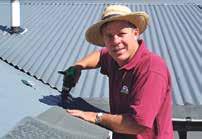
Aleisha will take 200 of her favourite Kiwi cross cows (she’s aiming for a jet black herd) and will have a French intern student help her for three months during calving.

Aleisha has also secured a sharemilking job for the couple on 115-hectares two farms down and James will milk 280 cows with Michelle as herd manager. He favours Jersey cows for this herd and Aleisha says he can do his own thing down that end of the road!
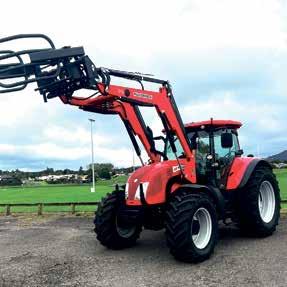
“ e three of us will basically work across the two farms, helping each other where required.








“With interest rates and farm working expenses on the rise we are on top of our budgets and every spend needs to be justi ed.”

Going forwards, Aleisha and James want to get the two new farms up and running to a high standard.

ey want to start a family and really want to give their future children the amazing rural upbringing that they both had.
Aleisha would also like to improve the rural/urban divide and attract more people into the dairy farming industry and support them to stay there.
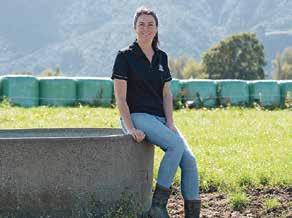

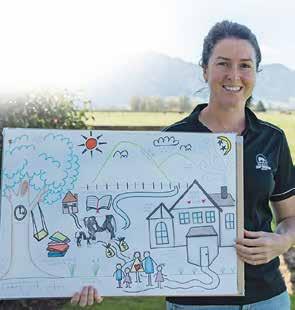
“I also host Japanese students and love promoting New Zealand in this way.”


e visitors enjoy meat and milk from the farm, veggies and fruit from the garden and cooking their meals from scratch. ey can observe milking and some will get hands on with the process.
Aleisha also creates weekend relief milking opportunities for

Slips, river erosion protection works, ripped out, blocked rivers, river channels o course, debris and silt buildup, river ood capacities compromised.
Across the Waikato region, the estimated cost due to damage from the ooding events is nearly $18.5 million.
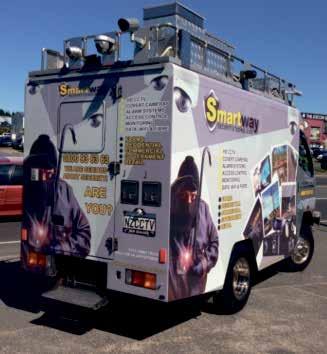
All areas presenting immediate high risk of ooding to communities and properties are being done as a priority before June 2023 with further remedial work to continue in the following two years.



One job of high priority is remediation works to the Ohinemuri River in Paeroa, beneath the Criterion Bridge, currently underway. e river, the largest tributary of the Waihou River, is part of the Waihou Valley ood protection scheme.
Works supervisor Hayden McGregor says major silt deposits accumulated on the inside corner (south side) of the river under the bridge during the oods signi cantly reduced the volume of water that could pass under the bridge.
“As a result of the river having to make room for itself, it eroded a lot of the river berm in the front of the stopbank that protects the town. So, we’re creating some rock armouring to the riverbank to prevent any further erosion and loss of bank.”
Up to a metre of silt was also removed from the surface of the berm on the downstream, south-side of the bridge to improve future ood capacity of the
river within the town’s two stopbanks. e unseasonably wet summer caused extensive damage to multiple rivers and streams in the Coromandel Peninsula and Hauraki catchments, and to a lesser extent in the lower Waikato/ west coast.
Cleaning up has been the immediate focus of the council’s river management teams, so removing trees from the rivers as they cause blockages that exacerbate damage, and realigning river channels.
Coromandel Catchments lead James Ferrier-Kerr says the events of the summer have culminated in the worst, widespread damage he has experienced in his seven years working in river management in the peninsula.

“A big part of the Coromandel story is the successive heavy rain events we’ve had in May, July, September, November, December, followed by Hale, Auckland Anniversary weekend in January then Gabrielle for three days in February,” says James.

“When Gabrielle made landfall, we were already in a state of catchment saturation with obstructions and bank erosion sites known but unable to be remedied between events. Since Gabrielle, we continued to have localised heavy rain in March and April.”
James says the priority has been clearing obstructions to mitigate the ood and erosion risk before starting on erosion protection works.
“We estimate a further 12 months of remedial works.”





Change is coming for landowners, as regional councils across the country work to set new objectives, policies and rules to protect the health of freshwater.
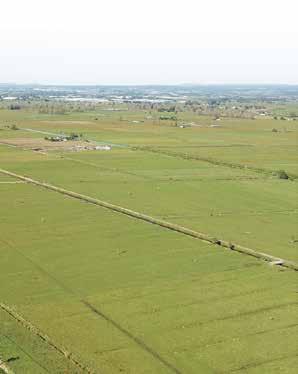

Bay of Plenty Regional Council policy and planning manager Julie Bevan explains what this means for the BOP region.
New policy
Central government has released a new National Policy Statement for Freshwater Management, and regional councils must update our regional policies and rules to give e ect to this.
Several national rules have already been introduced in September 2020 – for example recording and reporting on synthetic nitrogen use, a cap on intensive winter grazing and protection of wetland vegetation –and more will be phased in over time. Some changes we are exploring include changes to water take limits, restrictions on discharges into water and onto land, the retirement of land and land use practice requirements, and structures and works within rivers, lakes and wetlands.
During the next few months, our team is holding events across the region to update you on what the key freshwater management issues are for the region and for your FMU, and the draft options we are thinking about to manage them.
If you are a farmer, grower or lifestyle block owner, these changes might a ect you in more ways than one. Now is the time to have your say on the draft changes before they are decided on.
We acknowledge there is already a lot of change afoot due to new national regulations, and this is yet more, so we encourage your involvement and welcome you to talk to our team at events. Together, let’s work through and identify pragmatic solutions for long-term economic and environmental sustainability.

Feedback calls
We strongly encourage you to come to community events, running until September, and give us feedback while options are still draft.
A list of upcoming drop-in sessions are below:
• Tarawera: Tuesday 30 May, 2-7pm, Firmin Lodge, Waterhouse Street, Kawerau
• Tauranga Moana: Friday 9 June, 12-1.30pm (Online)
• Motiti: Monday 19 June, all day, location TBC
• Rotorua: Friday 23 June, 12-1.30pm (Online)
Waihī: Saturday 24 June, 10am-12pm, location TBC
• Kaituna: ursday 29 June, 2-7pm, Whakaue Marae, 721 Maketū Road, Maketū You can access a full list at boprc.govt.nz/ freshwater and scroll to the bottom of the page. You can also contact our Freshwater Project Team directly on freshwater@boprc.govt.nz
in Removal / chipping of whole trees
e rules will vary between di erent parts of the region (these are referred to as Freshwater Management Units or FMUs), depending on what the key concerns impacting freshwater are in those areas.
• Whakatāne: Wednesday 31 May, 2-7pm, Eastbay REAP, Pyne Street, Whakatāne
• Rangitāiki: Friday 2 June, 2-7pm, Eastbay REAP, Pyne Street, Whakatāne
On site chipping for stand off pads
Wood chip for sale
Orchard shelter removal
Stump removal
Woodlot marketing of all tree species
Specialising in
• Removal / chipping of whole trees

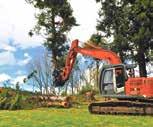

• On site chipping for stand off pads
• Wood chip for sale

• Orchard shelter removal
• Stump removal
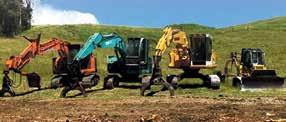
• Woodlot marketing of all tree species




e resilience of dunes and the sustainability of the sand-binding kōwhangatara/ spinifex is being keenly felt by Coastcare groups in the eastern Coromandel Peninsula.
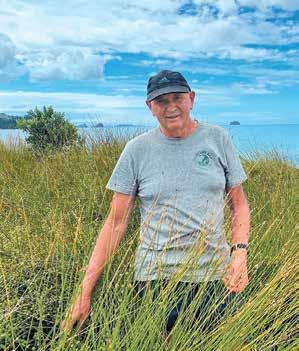
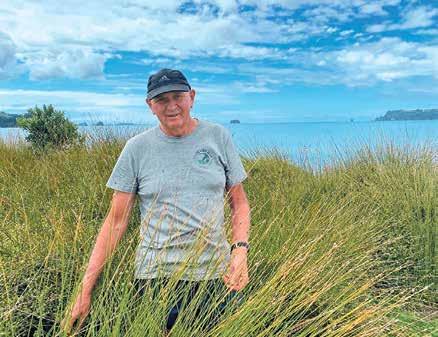
“Summer o ers a small window of opportunity to collect the seeds of the native dune grass from which the following year’s plantings are grown,” says Mercury Bay Environmental Trust project manager Kim Lawry. But with many of the seedheads swept away in Cyclone Hale’s fury, Coastcare groups from Whangapoua, Matarangi, Kūaotunu, Ōpito Bay, Wharekaho, Bu alo Beach, Onemana and Whangamatā
“weren’t able to get as many as we’d like” this year.
Collecting seedheads has become an important part in the process of dune restoration, says Kim.
Kōwhangatara is the main dune forming indigenous plant in New Zealand.
“Historically, spinifex didn’t reproduce by seed. ey didn’t need our help at all.

“Instead, they survived the dynamic seafront through a cycle involving retreating inland and advancing back toward the water.
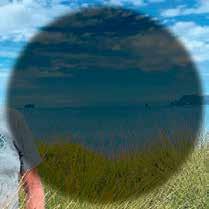
“After a storm, spinifex would naturally walk backward and sends runners inland to re-establish further up dune ... that was before coastal squeeze
interfered with this process and now we can’t just leave them to it. On many of our beaches, spinifex has limited space to retreat inland. We don’t have enough room between the shoreline and the houses and roads.”
Collected seedheads are instead sent every year to Coastlands Plant Nursery in Whakatane for germination and growth.
“ e window of opportunity to pick is small – you have to pick plants at the time the plants are releasing,” says Kim.
“We go in and tickle under the heads and when they pop o we take them. If you pick before the seeds are mature, then the germination rate is lower.”
He says another issue threatening kōwhangatara supply is the di culty of
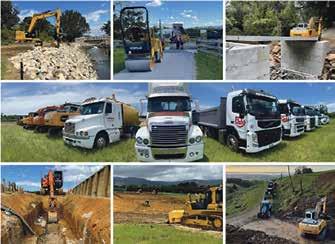

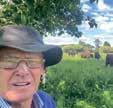
growing the plants and that there is no nancial return for all the hard mahi (work).
“It gives commercial nurseries no incentive to assist in spinifex supply.
“Growing the plants is a labour intensive process. After manually extracting seeds from the heads, each one has to be squeezed to check it’s viable.
“In the past, we could keep up with demands, but the more we’ve learnt about how important spinifex is, the more our demand has increased.
“ is problem of not enough spinifex … I was at a conference and spoke about this. e people that came up to talk to me afterward all had the same problem.”
It doesn’t help that the average number of viable seeds per head has gone down considerably over the past years.


Kim believes this could be due to climate change.
“ e prevailing winds we’re getting now may not allow for pollination to happen as it should.”
Innovation in growing spinifex is required to ensure its sustainability.
“ e idea for a nursery in Whitianga has been raised though it would require a purpose-built nursery that supports the narrow temperature ranges required for spring germination.
“We need to talk to universities to nd a better way to grow spinifex that is more e cient and less labour intensive.”
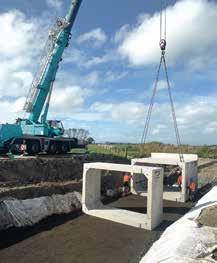

A new milestone has been reached in Waikato Regional Council’s Piako River mouth right stopbank asset rationalisation project.
e project seeks to replace three old oodgates near their end of life with one, while also creating a shorebird habitat and a pond for sh life (tuna/eels).
e latest milestone is the installation of a culvert, 4m wide x 2.5m high x 18.6m long and weighing 14.7 tonnes, which will connect new drainage from the south to the new pond and oodgate structure, which has yet to be built, says a Waikato Regional Council spokesperson.
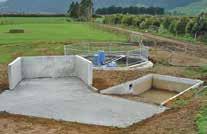
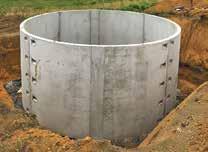



“ e drains will move excess water from the land through the pond and into the Piako River.


is project was started in 2020 after getting approval of $1.92m in funding from Kanoa – Regional Economic Development & Investment Unit.
“ e site was once paddocks that had become inundated by the sea after a king tide burst through a private stopbank.

“It was being used by shorebirds for foraging and roosting on old farm equipment before being purchased by the council for this project.”

So far, the council has:
• repaired the stopbank breach
• removed mangrove seedlings from the new shorebird habitat area
• removed the old farm infrastructure and used sediment from the site to create more natural raised roosting areas in the habitat area
• excavated drains to move excess water

• excavated the pond to support sh life year round
With a background in the dairy industry through engineering, milking machines and water pumps, Jim Oliver knows “all too well” the importance of having an e cient milking machine.
“It’s literally the heart of the dairy – its performance a huge in uencer on production, milk quality and animal health.”
As the owner operator of Joes Water, Jim says milk machine testing is one of the most vital services he provides to dairy farmers across the Waikato and Bay of Plenty.
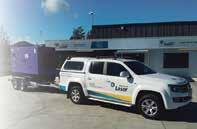

“Winter is traditionally the best time to get milking machines tested but we are also on call throughout the season to conduct tests to help isolate the cause of mastitis or grades.”
e requirement for all milking
machine to have an annual inspection carried out by a registered tester is mandatory to meet international ISO standards.



“At a farm level, DairyNZ say faulty milking equipment is estimated to cause as many as 40-50 per cent of new clinical cases of mastitis – so there are plenty of incentives to get the check done.
“ e inspection takes a few hours. We test the e ciency of all the components of the milking machine – vacuum, milk pump and pulsation; we check for leaks and assess its overall performance with recommendations for any remedial action to bring it up to its optimum performance.

“I am now a certi ed NZ Milking Pump Trade Association tester and enjoy the opportunity to help farmers maximise the performance of one of the most vital assets on the farm.”



• created new stopbanks and moved a stopbank • put in the culvert


Read more about the project here: https://www. waikatoregion.govt.nz/council/about-us/shovelready-projects/piako-river-mouth/
And about the shorebird habitat area here: https://www.waikatoregion.govt.nz/story-hub/ keith-woodley/



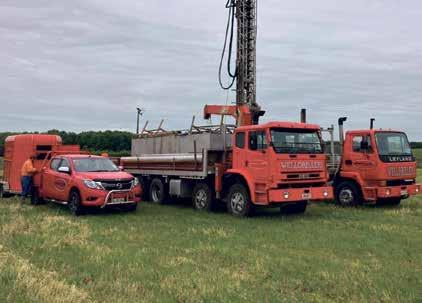

Eligible residents in Tokoroa are again able to take advantage of free clean heat replacements for their old wood burners through the ‘On the house’ scheme. e scheme was set up as part of the Warm Homes Clean Air programme, a partnership between Waikato Regional Council, South Waikato District Council, the South Waikato Paci c Island Community and Raukawa. It enables residents to replace their old noncompliant wood burners with alternatives like a heat pump, pellet burner or high-e ciency wood burner. e return of the scheme follows a decision by
Waikato Regional Council, made at its February 9 annual budget meeting, to continue funding it for another year, and con rmation this month of a new contract with smarter energy solutions provider, Brightr.
‘On the House’ had been on a temporary hiatus since June last year after the previous contractor announced it was no longer able to provide upgrades under the initiative.

“With in ation increasing costs across the board, we had some tough calls to make through our annual budget,” says Waikato Regional Council Chair Pamela Storey.
“So, I’m really happy this was one of the schemes we were able to continue funding.
“It’s going to help residents who are feeling the pinch of rising costs, and provide access to cleaner and more e cient heating just as we head into the colder months.”
e council’s annual budget meeting also included a decision to reconsider a possible future alternative to the scheme, called EcoRetro t, through the next long term plan. However, today’s announcement con rms ‘On the house’ will be available for at least another year.
“Uptake of ‘On the house’ slowed in recent years as many of those eligible had already upgraded, but with changes to the eligibility criteria opening the programme up to more homes, I say take full advantage while the scheme’s still available!”

e announcement also follows the
People are being encouraged to replace their old wood burners.
council’s decision in June last year to change the eligibility criteria for the scheme so more people could tap into the funding.
Eligible homes must:
• be located in the Tokoroa airshed.


• have been built prior to January 1, 2008.

• be an owner-occupied residential property.
• be owned and occupied by a person who holds a current Community Services card or has received a rates rebate in the last two years or is located in NZ



Deprivation Index Zone 8 to 10.
• meet the insulation requirements of EECA or have put forward to have their insulation undertaken by an EECA provider in the last two years.

• meet the EECA heating standards.
• have an owner-occupier seeking to replace a non-compliant wood burner with a clean heat alternative.

Find out more about free clean heat upgrades under ‘On the House’ scheme on the council website: southwaikato.govt.nz/ our-services/warmhomes/heating-schemes

As well as calling on her family’s wisdom, a Pirongia dairy farmer says she’ll incorporate preparation into day-to-day on-farm tasks.




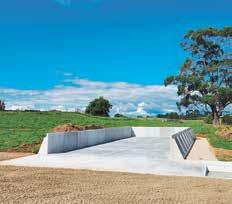

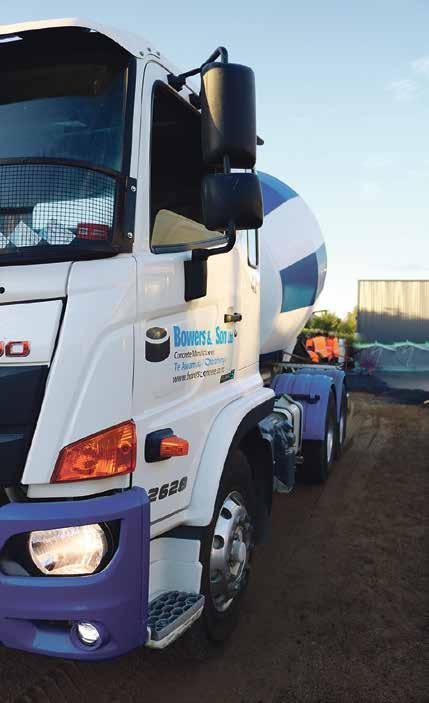
Emma Poole, from Te Kawa West Young Farmers, was recently crowned the Waikato/ Bay of Plenty Young Farmer of the Year.

She took the title of her husband, Chris Poole, who was the Season 54 Waikato/Bay of Plenty Young Farmer of the Year. Her brother, Tim Dangen, took out last year’s Grand Final, making him the current FMG Young Farmer of the Year title holder.
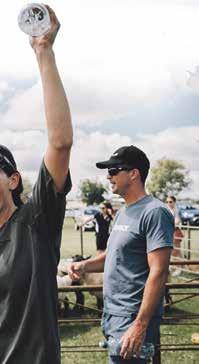

It’s Emma’s second shot at going for gold, as she was an FMG Young Farmer of the Year grand nalist in 2019.
Following her win, she explains
that her focus is now building up her physical strength and tness.

“Between Chris, Tim and I, we all have di erent strengths, so I will be able to pick their brains on some things that I’m not so good at.
“At the end of the day, winning or not winning, being able to put on a quality display will be my priority.”
Edward Roskam, also from Te Kawa West Young Farmers, placed second, with Cameron Wratt from Morrinsville Ngarua Young Farmers securing the nal spot on the podium.
New Zealand Young Farmer Board chair Jessie Waite says this year’s Grand Final is shaping up to be one of the best yet.


“We’re starting to get a glimpse of the impressive array of skills


and talent coming through with the next generation of young farmers. ere’s so much happening right now in the primary sector with science, innovation and new technologies. e future of farming is certainly bright.”
Emma says she’s thankful for the support of volunteers and sponsors who continue to back the event, year-after-year.
“ e contest wouldn’t be what it is today without them.
ere’s a lot of hard work that goes on behind the scenes –from coming up with ideas for the competition to supplying the equipment needed on the day and helping with the set-up of the event. We’re so grateful to everyone who has played a part.”
Farmers are being urged to do their bit to protect farms from damaging pest plants by ensuring machinery, vehicles and equipment have been cleaned ahead of Moving Day. Planning is also necessary when it comes to preventing e uent entering waterways and keeping roads clear and safe for road users in the region, says Waikato Regional Council.

Moving Day occurs in the week leading up to and immediately following June 1 each year.
It involves the mass transporting of cows and machinery around the country’s roads as farm contractors relocate themselves and their stock in time for the new season.
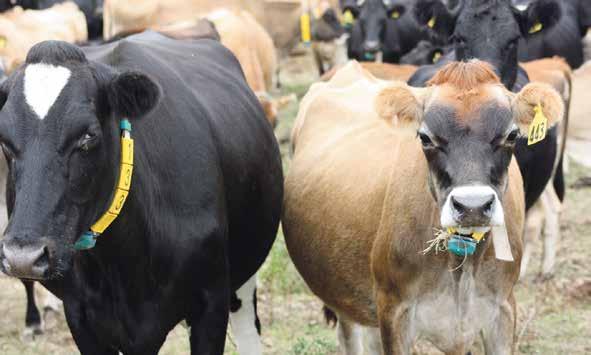
“ rough good on farm biosecurity practices, farmers and contractors can make a massive di erence to preventing the spread of pest plants and weeds,” says regional council biosecurity pest plants team leader, Darion Embling.
“Unclean machinery is a con rmed pathway for the spread of infestations, such as velvetleaf and alligator weed, between some farms in our region. at makes machinery hygiene especially important with Moving Day coming up and the mass movement of stock, machines and vehicles between farms.”
Darion says machinery hygiene must be practiced any time a machine is moved between properties. “Any form of plant or soil contamination has a real potential for harbouring pests or weeds. Machinery should be cleaned so no visible soil or plant matter remains.”
Ideally, machinery wash-down should occur on the property prior to movement, containing any problems at the source. Alternatively, machinery may be cleaned in a built-for-purpose wash-down facility, but care should be taken to ensure there is not a risk of pest spread during transport to that facility.

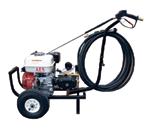

“Pest plants such as alligator weed and velvetleaf can have a massive impact on the productivity and pro tability of farm businesses, so farmers and contractors need to be extra vigilant when moving between properties.”
More information is available at waikatoregion. govt.nz/biosecurity
Farmers are also reminded to stand stock o green feed before they’re walked or transported to prevent e uent entering waterways and help keep the region’s roads clear of discharge and safe for users.
A cow’s daily combined e uent is about 52 litres, and a truck e uent tank’s capacity is just 200 litres. It means the spillage of e uent onto roads is a real risk unless farmers in particular take some simple steps ahead of time.
e regional council recommends that farmers:

• con rm stock pick-up times in advance of transport to eliminate confusion
• move stock close to the loading ramp the day before, when possible


• stand stock o green feed for a minimum of four hours (with water)


• use dry feed before transport because it results in less e uent.

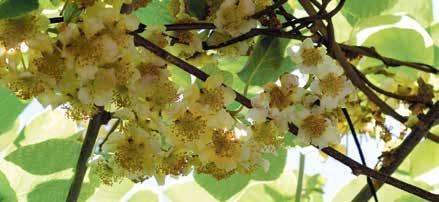

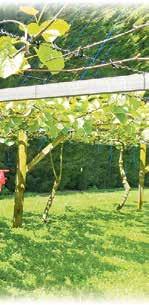

Wet pollination is being touted as an e cient and e ective method for pollinating crops for kiwifruit growers across the upper North Island. is has also been con rmed by a Hayward trial showing wet arti cial pollination positively impacts yields, taste, size and shape of kiwifruit.
Bay of Plenty-based All Terrain Pollination’s Grant Luscombe says the method produces consistent and excellent results.
“ e Hayward trial was run








alongside dry pollination application and demonstrated that wet pollination results in bigger and better shaped fruit and a larger number of rst-class trays with a positive impact on grower returns.
“In addition to fruit and crop attributes, wet pollination –contrast to dry pollination or bees - can be applied in most conditions and will work in instances where bees may not.”
All Terrain Pollination applies wet pollen directly onto the owers using a patented process which was designed and tested in New Zealand, mitigating





Despite a challenging 2021/2022 season, the annual New Zealand Dairy Statistics report released by DairyNZ and Livestock Improvement Corporation shows an innovative dairy sector responding well during a changeable time.
DairyNZ chief executive Dr Tim Mackle acknowledges that farmers’ achievements in the face of a range of challenges in recent years is positive.
“ rough tough times farmers continue to prove their resilience and stay focused on milking better and more e cient cows, by making the most of technology and information.
“Dairy farmers are proud to be world leading and work hard to retain their unique pasture-based farm system, as they keep milk production owing and therefore creating real value for New Zealanders.”
numerous environmental variables that can come into play during the crucial pollination period. Pollen supply is extremely tight this year, so it’s extremely important to maximise the value in its application. On orchard costs have increased signi cantly hence it is crucial to e ectively pollinate to in turn create opportunity for maximum pro ts. Wet pollination as a system can become a signi cant insurance policy in creating quality results year in and year out despite many environmental challenges.

AgResearch is teaming up with regional councils and Rural Contractors New Zealand to collate information on alligator weed in a bid to better understand its spread.
The plant often dubbed “the worst weed in the world” has been in New Zealand for more than a 100 years but was contained to Northland.
But in recent years it began spreading and has since been found in Waikato, Manawatū, Auckland, Tauranga and now Hawke’s Bay.
The AgResearch programme is being funded by The Ministry for Primary Industries Sustainable Food and Fibres Fund, with $270,000 over three years.

AgResearch scientist Trevor James says there’s a lot of anecdotal evidence about alligator weed, which is native to South America, and the damage it can do – so it would be good to have hard and fast data.

“What we do know is that it’s causing big problems for farmers and growers, so it will be good to get out and chat to them about it.
“It’s a semi-tropical weed and for a long time it was confined to waterways but it can also invade the riparian areas.
“So it gets into a riparian strip then a fragment is broken off and dragged by a cultivator or something into the middle of the paddock then it grows there.”
James says the weed has caused huge issues for kumara growers and happily grows under kiwifruit vines as well.

“It’s incredibly difficult to kill it because it has huge roots, people often spot spray it with a herbicide which controls it to an extent but doesn’t get rid of the problem.
“Any impacts on stock remain unclear, but the weed can certainly take over pasture and is spread by tiny plant fragments, which may survive for years.”
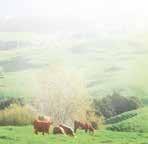


James says a beetle was introduced to control alligator weed in Northland and Auckland in the
1980s, but this might be proving less effective as the weed spreads to regions with cooler temperatures.
“We don’t know why it’s spreading and we may never know, but if have a better understanding of how it behaves in certain areas it will help in the fight of getting rid of it.”

He says one of the first pieces of research is to test whether alligator weed can survive in baleage, which is often exported to other regions by rural contractors and farmers.
“Human-aided dispersal is still our biggest issue with noxious weeds.”




James says it’s vital if people think they have spotted the weed that they report it to their regional council.
Rural Contractors president Helen Slattery says rural contractors have a major role to play in helping curb the spread of all noxious weeds.
“Our members take machinery from farm to farm and we also often send baleage and hay to other regions. So, we want to do all we can to make our members aware of the risks of spreading anything that can cause harm to our nation’s biosecurity.”
She says that includes rural contractors carrying out machinery hygiene practices, especially in areas where there were any alerts about the presence of biosecurity risks such as alligator weed or any other noxious weeds.




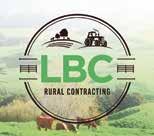

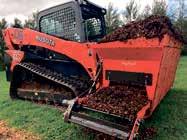
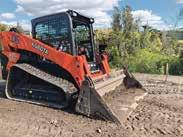
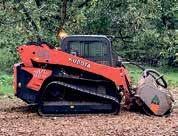
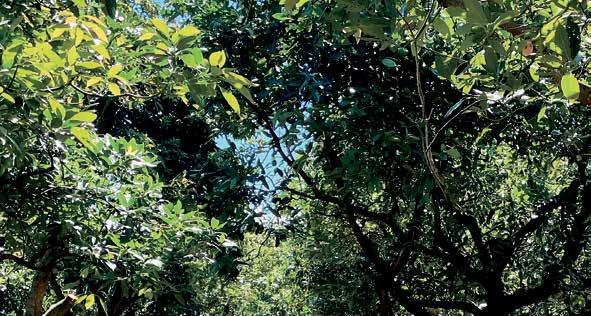
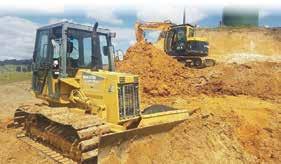

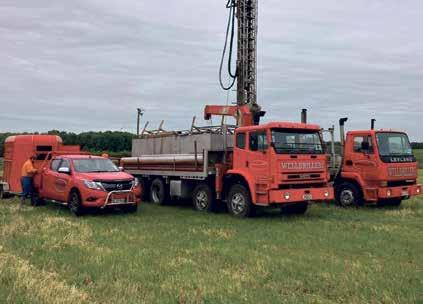

After more than two decades in downtown Tauranga, Bayride Motorcycles has relocated to a purpose-built new facility in Tauriko Business Estate.
Damian Fleming says Bayride is now located at 11 Matakokiri Drive next to the Challenge fuel station making accessibilityand parking - a breeze.
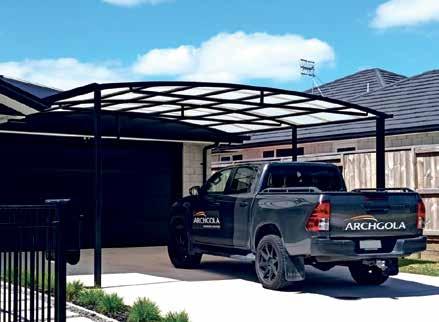
“ e new site is ideally positioned between Tauranga, Katikati, Rotorua, Te Puke and South Waikato making Bayride Yamaha accessible to the wider farming community.
“Yamaha farm bikes are the perfect choice for New Zealanders. With a low cost of ownership over the life cycle backed by a three-year warranty it makes sense to go with a brand that has local support and history.

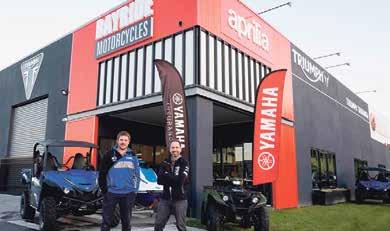
“From the trusty AG125 2 wheeler to highly practical Wolverine Utility we have a






vehicle to suit most lifestyle, orchard and larger farms. ATV popularity isn’t going away with Kodiak 450 and 700 being the best riding and reliable quad bikes out there.”


Damian says farmers can enjoy their new ATV or Side By Side with No deposit and nothing to pay for 12 months on a 6.95 per cent commercial nance plan * T&Cs apply.
With up to 150 hours service intervals we help keep you on farm doing what you do best, we maintain and keep your gear at its best in our fully equipped service centre.
“Come in and visit the friendly team, we welcome new farmers to the district and can’t wait to show-o our new site.” For further information, see their advert on this page.

A collective e ort to develop an online mapping system shows the extent voluntary and community groups in the Western Bay of Plenty are going to in helping make the region predator free.
More than 30,500 pests have been recorded as being caught across the 160,800 hectares that have traps and bait stations, providing GPS data to map and measure success.
BOPRC has been working alongside Tauranga City Council, Western Bay of Plenty District


Council, Predator Free Bay of Plenty, Enviro Hub, Bay Conservation Alliance, Manaaki Kaimai Mamaku Trust and DOC to get to the government goal of making NZ predator free by 2050.
e Predator Free vision is focused on the complete removal of the ve most damaging predators: Rats, stoats, ferrets, weasels, and possums. Pest numbers: 30,500 caught. More than 17,000 rats, 3800 possums. e rest are comprised of stoats, ferrets, weasels, feral cats, hedgehogs, and mice.
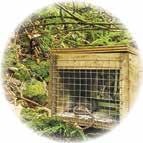

With increased rainfall and weather events impacting the region, Bay of Plenty Regional Council is reminding landowners living near the region’s ood defences to refresh themselves of the rules.



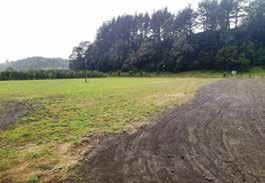
e Flood Protection and Drainage Bylaws provide protection from damage and misuse to ood protection and drainage infrastructure assets (such as stopbanks, oodgates, drains and pump stations), which are managed by or under the control of Regional Council.
“Flood defences are the rst line of defence when it comes to reducing the impact of signi cant ooding,” says rivers and drainage asset manager Kirsty Brown.
“ ey have been built to increase productivity of land, and prevent damage, danger, and distress to the community from ooding, and problems associated with a lack of drainage, so it is crucial they function properly when needed.”

Kirsty says a common issue is stock overgrazing or pugging on stopbanks during periods of prolonged rainfall, as this can damage and weaken the stopbank.
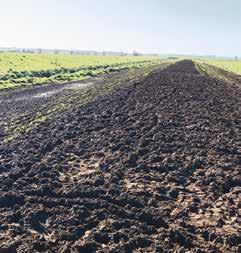
“While light grazing of sheep and cows is allowed on stopbanks, it is not permissible to allow stock to damage them, and most farmers and lifestyle block owners know these rules.
“ e reason is that when stopbanks become wet, stock can churn up the ground. is can create integrity risks for the stopbank through loss of grass cover –good grass cover is needed as it helps hold together the soil structure underneath. Loss of grass cover has been shown to be a contributing factor to stopbank failure in the past.”
Another issue is dumping rubbish on stopbanks or in drains, which can end up blocking the drain’s pump station and stop it from working e ectively.
“Pumps are important for removing water out of drains as they become full, so if there was heavy rainfall and the pump wasn’t working, water levels in the drain would rise and potentially over ow, putting land and lives at risk.”

Under the bylaws, these are not permitted activity and landowners can be liable for any damage to the ood defences.
“Our Rivers and Drainage team routinely monitor the condition of our ood defences, but we also welcome contact from members of the public who may suspect a problem. Our 24/7
Pugging on the crest of a stopbank after overgrazing by cattle.
Pollution Hotline (0800 884 883) is the best way to report any areas of concern.”




One of Regional Council’s core roles is to make sure our ood defences are in good condition and manages more than $440M of ood defence infrastructure on behalf of the community.
Find out more about ood protection in the region, include details of the Bylaws, on the Regional Council website: www.boprc.govt.nz/ ood-defences
A unique multi-purpose shredder, imported from Germany, is dealing to slash and stumps and enabling it to be added back into the earth to enhance the environment.
e shredder is being used instead of burning or creating debris, which can cause problems and take years to break down.
Ernie and Heidi Schicker formed Schicker Earthmoving Contractors more than 35 years ago.


Over the years the partnership has transitioned from farm fencing (Ernie winning the National Fieldays Golden Pliers fencing competition three times) to earthmoving (bulldozing fence lines, tracks, raceways, subdivisions, house sites) and now recycling a variety of materials.
“Initially we bought the shredder to recycle our pine plantation and found it does a fantastic job. It is so diverse, from crushing rock – up to 150 tonne an hour – to crushing concrete and removing reinforcing steel from it as well as shredding tyres,” says Ernie Schicker.
“One person operates the shredder
from a loader or digger that loads the material and the remotely controlled Arjes Impaktor 250 shredder does the rest.
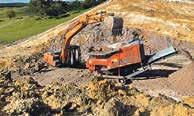
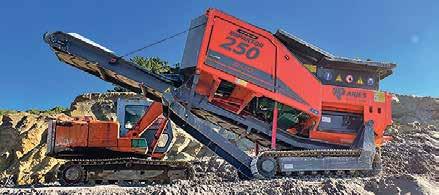
“ e shredder was so e ective at transforming our forestry block into pasture that we bought a second one to ful l demand around the North Island. “Our shredders are available for dry hire or with an operator or digger across the North Island.”
For further information, see their advert on this page.







Whakatāne Mayor Victor Luca says it is time for the district council to step up and show leadership around reducing emissions.
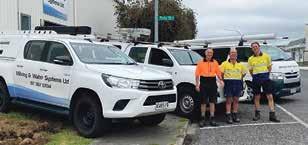
At a meeting last month, Whakatāne District Council’s energy, environment and resilience committee, which he chairs, discussed a scoping report the council had commissioned to investigate the potential for producing solar energy on council properties.
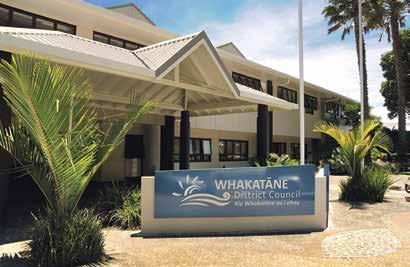
Emissions
“New Zealand accounts for about 0.05 per cent of global emissions, which is bugger all,” says Victor.
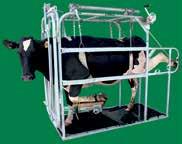
“Some will take the view that shows we should do nothing. But there’s also the argument that if a country like ours, that is relatively prosperous, cannot do the right thing, and reduce its emissions, then why on earth would China – which is now the biggest emitter on the planet – ever try and do anything? Or India for that matter, or the United States?
“As community leaders it is also incumbent on us to show leadership, and that includes reducing our own

emissions. So this [report] can contribute to that as well.
He says localised energy production will also provide the community with greater energy resilience in times of crisis.
We’re not going to have enough power in this country.
“If everybody wants their lights to go on and has got used to living with power, you might want to give some consideration to increasing generation capacity.”
However, there’s “a lot of water to go under the bridge” before the council can make any decisions on solar energy options.

“ ere is a lot to weigh up in terms of models and how exactly you structure these things.”
they’re not there for a haircut. ey’re here to make money.”
He says a lot of other territorial authorities around the country are also getting into the solar energy game.
“New Plymouth [council] is about to build a solar farm, Christchurch has a massive solar farm going in by their airport. I think it’s time for us to step up.”
“We’ve just seen how, when you’ve got a non-distributed system with centralised generation, you knock out one part of it and you’ve taken out the lot.”
Power
Victor says New Zealand is “almost completely dependent on hydro generation”, which is not going to see any increases in capacity in the near future.
“Our energy requirements are going to increase by at least 40 per cent by 2040 and probably double or triple by 2050.
e Environmental Protection Authority has partnered with NZ Landcare Trust and Wilderlab to fund 19 community catchment groups to test a waterway in their region to discover the plants and animals living in it. ey will test for environmental DNA, or eDNA, which is the tiny trace of genetic material left behind as living things pass through water or soil.
EPA engagement general manager Paula Knaap says rural groups see many bene ts from learning more about their waterways.
“ rough eDNA, they might learn about native sh living in a stream, for instance. ese sh aren’t always easy to see, so eDNA results give a clearer picture and allow groups to better manage their waterways.
“Our eDNA programme supplements a lot of the restoration work catchment


groups are already doing such as riparian planting, stream health assessments, restoration of mauri of awa and kaitiakitanga.
“Most of the funding for the groups will go toward baseline testinggetting an overview of what lives in their streams and catchments. Other groups will be monitoring over time or comparing di erent sites in their catchment. Many of the projects are led by mana whenua or are collaborations with mana whenua.”
Paula says this round is an opportunity for the EPA to connect and build relationships with catchment groups, and the rural sector. Many of the catchment groups involve farmers and other members of the agricultural community. Landcare Trust has been working with the EPA to connect our programme to rural communities.
Victor says there are at least three big companies putting in utility scale solar farms in the Whakatāne district already, “because they have noticed that we are very sunny”.

Local Democracy Reporting has previously published a story about the Lodestone Energy building, a 32MW solar farm in Edgecumbe.

He says Helios Energy is also quite far advanced in building an 110MW solar farm in Edgecumbe and he understands Far North Solar is also looking into the area.

“ e original proposals that we put in preceded that. Now they’re here, and



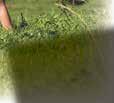
“It was always about farming,” says Jasmine Hall.
e NZDIA 2023 Central Plateau Dairy Trainee of the Year and winner of two merit awards was raised on a bull and beef farm in Waiotapu.
She was taught to milk by a neighbour and reliefmilked for them from the age of 15.
After leaving school she took some calf rearing and xed term farm assistant positions waiting for things to open up after Covid-19 disrupted her OE plans.
When things didn’t look like they were opening up, she took a farm assistant role at Stu and Anne Koopal’s 204-hectare Rerewhakaaitu property in June 2022.
“Working with people who have similar values to mine means I can push myself to take opportunities and progress, while still having exibility and balance in my job,” says the 20-year-old.

She was inspired to enter the Dairy Industry Awards by previous title winner Tayla Flight from Reporoa.
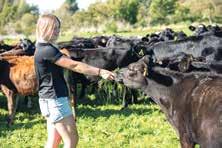
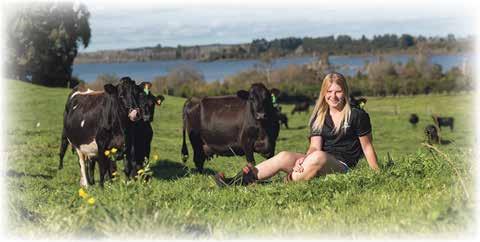
“Seeing her video resonated with me and has shaped my progress in the industry. I aspire to work with progressive and passionate farmers and continuing to
upskill myself.” In her current role, Jasmine has been learning about all aspects of stock management, especially pasture management and feed allocation. She is proud to have been given responsibility for managing all of the calves on the farm this season, seeing raising good calves as the best start to growing quality heifers.
Jasmine won the DairyNZ Skills merit
award and enjoyed the practical skills day where fencing, tool identi cation, bike safety, FEPs, feed knowledge and general knowledge are some of the subjects covered.
“ e winner of the merit award got the highest points on skills day, but you’re only
told if you are in the nal six, so awards night was a nice surprise.”
She also took home the Blackman Spargo Rural Law Ltd Knowledge merit award. e judges said: “your general farming knowledge was excellent, you showed us you have a comprehensive understanding of dairy farming especially animal health, dairy plant hygiene, calving and mating management”.
in

While technology,

In June, Jasmine will head to Australia to work on a dairy farm or sheep station for six months. Her goal is to return in 2024 and start a Bachelor of Ag. Com at Lincoln University. While technology, environmental and animal health improvements, and the New Zealand grass-based dairy system inspire her, what gets Jasmine out of bed on cold and rainy mornings, is her genuine love for cows.
Whilst Tree Transplant Services is based out of Tauranga, the company operates all around the Bay of Plenty, and further a eld. ey relocate trees on home and lifestyle blocks, orchards, schools and kindergartens, parks, golf courses, shopping centres, new subdivisions and local body projects (even protected trees can be relocated). “Trees are a natural way to provide beauti cation to all properties.”

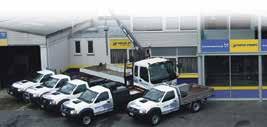

Tree Transplant Services has been operating for more than 27 years and was sold to new owners in 2022. Barry, Christiane and son Luca, now run the business, and they treat their customers (and the trees) like family too.

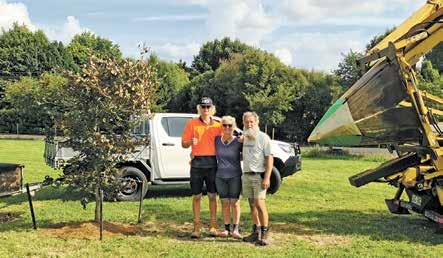
No job is too big or too small for this family-run BOP company.

At the end of 2022 they transplanted 23 trees (including three 12-year-old Pohutukawa trees) at Papamoa College – saving them from a construction project. e Pohutukawa trees had to be dug out with their excavator and lifted with a crane or HIAB. is year they have saved and relocated trees on farms, private homes and avocado orchards. Recently they moved 36 avocado trees from an Oropi orchard – ve of which were
transported to Te Puke. ey also have a small nursery where they plant rescued trees for later supply to customers who require instant shading or screening. Earlier this year they supplied two such trees to a property in Tamahere, Hamilton, where the new trees provided instant beauty and screened a neighbouring development. For more information, see their advert on this page.
Rotorua business Unearth Ag has been recognised as one of Australasia’s leading independent precision agriculture technology providers, being recently named the Ag Leader ANZ Dealer of the Year. Unearth Ag clinched the honour ahead of 60 other dealers in New Zealand and Australia.
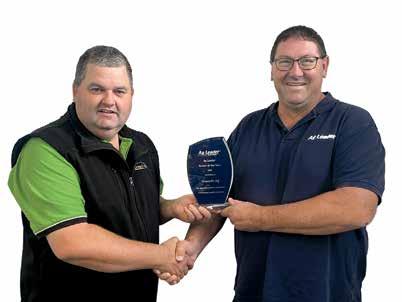
Director Matthew Gray has more than 20 years’ experience in intensive farming, farm machinery and precision agriculture technology. Raised on a mixed cropping
and livestock enterprise farm near Gisborne, he completed a Bachelor of Commerce (Agriculture) degree from Lincoln University before travelling to America for a

graduate exchange programme with Ohio State University.
His was placed with Miles Enterprises, a large agribusiness
with interests in farm supplies, crop protection, farm machinery, agronomic services, nance, insurance and farming in Kentucky.
Matthew returned to New Zealand and worked as a farm machinery operator, service technician, precision ag product specialist and precision ag business manager before establishing Unearth Ag in 2016.
cropping operations, thereby helping to improve their productivity and pro tability.

maize growers throughout the upper North Island.
“As a precision ag specialist, I am lling the gaps between what comes with machinery and what you can do with aftermarket options.”

Zealand and worked as a farm and to unearth the customers,” he says.
“ is can be anything from simple guidance systems right though to fully automated maize planters, precision control systems for sprayers and spreaders and yield monitoring.”
Unearth Ag works closely with

For more information about Unearth Ag, visit their advert on this page.
“As our name suggests, we want to unearth the potential of our customers,” he says.
“Our goal is to to
“Our goal is to help farmers and contractors to gain a true view of the performance of their







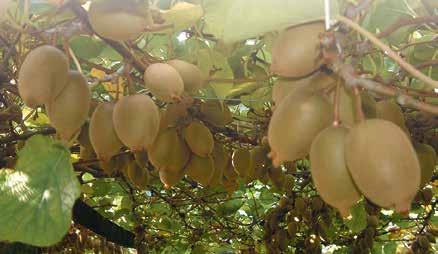
Based on more than 30 years of extensive research, development, testing and real-world use, Flamingro is an exciting new product for the suppression of harmful plant parasitic nematodes.
Rew Enterprises Ltd Company director Ian Rew has been working with chitin-based products for the past 30 years.

In California in 1992, Ian developed a liquid chitin product after noticing the improvement of plant health in soil treated with chitin.
In 2010, Ian returned home to New Zealand and bought a farm near Rotorua.
Later, he picked up the chitin project locally, and Rew Enterprises Ltd developed Flamingro. is new dry product improves on the previous formulation. During development, Flamingro went through extensive and successful testing at Ag Research Hamilton and Plant and Food Research Lincoln. ere are ongoing trials underway across New Zealand.
Flamingro has a signi cantly higher chitin content than the previous liquid formulation, and Rew Enterprises are


happy to be able to o er a cost e ective product for plant parasitic nematode suppression to New Zealand and Australian farmers.
New Zealand will have a firearms registry from 24 June 2023. If you’re a firearms licence holder, you’ll be required to provide information about your arms items from this date.
Te Tari Pūreke – Firearms Safety Authority is responsible for managing firearms in New Zealand.
We want to enable the legitimate use of firearms for feeding our whānau, conservation, farming and recreation while keeping our communities safe.
The Registry is one of the ways we’re strengthening how we manage firearms in New Zealand. With responsible firearms licence holders doing the right thing and filling in the Registry, it will help keep track of legally owned firearms and prevent their transfer to those who use them for criminal purposes.
The Registry will help us make New Zealand safer.
It will give licence holders more confidence when buying or selling firearms, as the Registry will let you know if you’re dealing with a current licence holder and if the firearm has been reported stolen.
You must tell us about any arms items in your possession within 5 years.
There will be no charge for registering your arms items.
What needs to be registered
Non-prohibited firearms (including Specially Dangerous Airguns)
Prohibited firearms
Pistols
Restricted weapons
You have until 24 June 2028 to register your arms items. However there are some circumstances where you must provide information for the Registry in a shorter time frame. These are referred to in the Arms Amendment Regulations as ‘activating circumstances’. You can find information on these timeframes at: firearmssafetyauthority.govt.nz/registry
Applying for a licence or endorsement Exporting an arms item
Supplying
Notifying
Importing an arms item or ammunition
Modifying a firearm from non-prohibited to prohibited, or prohibited to non-prohibited
If you’re subject to any compliance or enforcement action under the Arms Act
When one of these circumstances happen, we’ll contact you and let you know what you need to do. However, it’s up to you to ensure you keep your information up to date.
Details needed to register your arms items
• Type (rifle, shotgun etc)
• Make
• Model
• Action
• Calibre/gauge
• If it has a non-detachable magazine and, if so, its capacity
• Identifying marking (serial number)
• A photograph of the firearm (if requested)
Firearms licences online
Apply for a firearms licence and update your contact details online using MyFirearms: a secure, online portal available at www. firearmssafetyauthority. govt.nz
For more information on Te Tari Pūreke and any legislative or regulation changes that may affect you, go to www. firearmssafetyauthority. govt.nz
Register from 24 June 2023
You can quickly and easily register your arms items on our website at any time. Just click on MyFirearms. Otherwise our Registry and Services team will be available by phone to help during business hours.
Come and see us at D58, D Street, this Fieldays : giveaways, prizes and answers to your questions.
®
If you’re a firearms licence holder, you’ll need to know about changes to the storage and transport rules for firearms and ammunition, and changes to the seven rules of firearms safety.
Regulations were updated in February 2022, and to help Kiwis make sense of those changes, Te Tari Pūreke, the new firearms regulator, published a Secure Storage and Transport Guide.


All ammunition must now be stored in a locked container. You can now only store ammunition with firearms in a gun safe that has a separate lockable compartment with a different key than the key for the gun safe. You must keep these keys separate.
If your safe doesn’t have a separate lockable compartment, you need to store ammunition in its own secure storage container with a key, combination, or padlock, or in a stout locked cupboard.
Under no circumstances can firearms, ammunition or other arms items be left in a vehicle overnight.

If you’re driving anywhere with your firearm, it needs to be inoperable during your travel and must be concealed from view. This means removing the bolt or an essential part (or if that’s not possible, applying a trigger or cable lock), or transporting the firearm in a locked carry case.
The ammunition needs to be separately and securely stored in a locked glove box or similar storage area, if practical.








And please, whatever you do, once you’ve finished using your firearm, unload it and lock it away. Never leave any firearms in your shed, home or vehicle unsecured at any time.
The only exceptions to the firearms and ammunition transport rules are if you’re using the firearm on a farm for farm-related activities, or you’re doing legally-authorised hunting or pest control (such as a regional council employed pest controller) and the licence holder is in the vehicle or the immediately vicinity of the vehicle with the firearms in it.

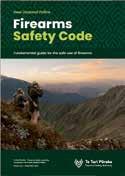
Get ahead of the changes to firearms safety rules with the Firearms Safety Code.
Buy the book from www. firearmssafetyauthority.govt. nz/firearms-safety and have it shipped to your door or download a PDF copy for free.



Treat
Always point firearms in a safe direction
Chamber a cartridge only when ready to fire
Identify your target beyond all doubt








Check your firing zone
Store and transport firearms and ammunition safely


Avoid alcohol or drugs when handling firearms

The seven rules of firearm safety have changed.
After a complete change of direction from their Auckland lives, Rob and Kirsty Horne made the move to dairy farming and are now happily raising their children on a Reporoa farm.
“Rob was taken on as a dairy farm assistant in 2008 with no experience by well-known, Central Plateau dairy farming couple, Nick and Bec Simmonds, and we’ve worked our way up into our current contract milking position in Reporoa,” says Kirsty. Once living on a farm, Kirsty “rebelled at the age of 43” and got animals.
“I’d always loved animals but wasn’t allowed much in the city. I spent my childhood holidays on my great aunt and uncle’s lifestyle block in Bulls. ey bred cats, dogs and parrots, and always had animals they had rescued around. I loved it.”


By March 2022, she had amassed a good collection of animals including parrots, goats, rabbits, guinea pigs, chickens and two alpacasful lment of a promise to her daughter, Summer. Two kunekune pigs, a sheep, a calf, quails, doves and a blue-tongued lizard are in the mix.


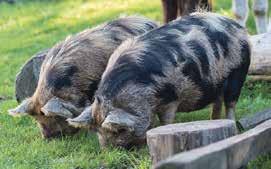
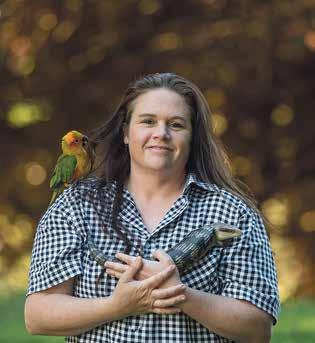
“ e time was right for me to step back from the


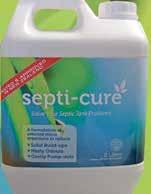




farming side and start the petting farm I had always dreamed of, bringing farm life to the city kids.”

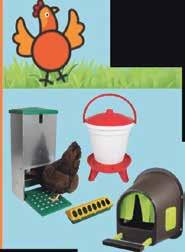


Rustic Charm Travelling Farm was born and with the help of some like-minded and enthusiastic young helpers and Summer, Kirsty got her farm on the road. ey are market regulars at e Mount, Papamoa and Taupo.


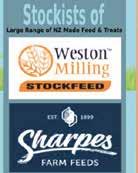
It’s no mean feat getting the farm ready for a day out. Kirsty has a customised horse oat which can transport the pigs (Peggy and Peaches), alpacas (OJ and Osun), the sheep (Crackers), two goats (George and Ja a) and calf (Daisy) in the main part, and the smaller animals such as birds, rabbits and guinea pigs are safely stowed in collapsible crates.
A microwavable heat pad keeps the blue-tongued lizard (Lizzy) warm on colder days.

“We carry food and water for the animals, all the pens and gazebos, and it’s a real team e ort to set up for a market. en we have to make sure all the animals are safe and well-looked after on the day.”
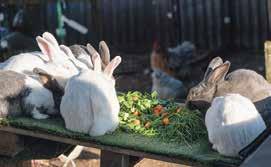
Kirsty talks to the children they meet and answers questions about the animals. She says it’s really interactive and the kids get to feel all the di erent textures such as feathers, wool, fur, bre and scales. It initiates a real educational experience for them.

Sanitiser and wet wipes are on hand for any accidents and to maintain hygiene after touching di erent animals.



Many of Kirsty’s animals are rescued or hand-reared, whether it be furry or feathered, and there’s always something being nurtured at the house.
Kirsty describes their vet bills as astronomical, running into the thousands each year.
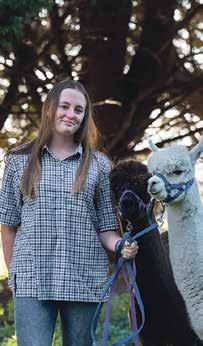
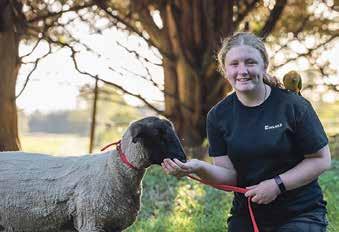

“I’ll always try and give an animal a chance and we have animal formulas at the ready for when the next orphan or rescue arrives on our doorstep.”
Rob breeds parrots himself and is fully supportive of his


wife’s venture, as are their children Brock, 17, and Summer, 12.
Accommodating the dietary needs of such a diverse group of animals is another large nancial outlay. Grass and hay are the main food for the farm animals, with grain and fruits used for training and treats.
“ e rabbits and guinea pigs power through 2kg bags of rabbit food and a huge amount of veggies and fruit.”
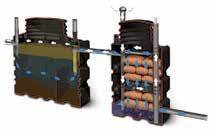


In the future Kirsty would love a couple of donkeys, and miniature cows would be awesome!
Farmers of retirement age are hurt more often than younger farmers, and WorkSafe says more care needs to be taken of children on farms.



In the rst three months of this year there were ve farm fatalities and 30 WorkSafe noti able injuries, with more fatalities on farms than any other industry.

ACC gures showed the number of farm injuries over the past ve years were on a downward trend, with 23,096 farming-related injuries in 2018 down to 22,631 last year.
Farmers aged 65 or older was the biggest group of claimants at 3429 last year. at compared to a total 7455 claims for those aged 25 to 60.

Worksafe general inspectorate manager for Hamilton and New Plymouth, Greg Peters, says


injuries to children are unacceptable and that many farmers are not aware that a child doing work on a farm needs to be treated like a worker.
ere is a di erence between when a farmer’s child, who rides a motocross bike across the paddock for fun, and when the same child uses the bike to round up cows, says Greg.
e workplace is de ned by the work carried out at that time and farmers had responsibility to people irrespective if they’re family members or not, he says.


Farmer have a responsibility under the Health and Safety Work Act to make sure that a child was competent and trained to do tasks, had the right protective equipment and could do the job safely, says Peters. Work pressure often plays a role in accidents, he says.
Gerhard Uys/StuffNZ Adventures o ers a wide range of tours across the South Island of New Zealand.
And one of the most popular and longest established tour is the High Country Heritage tour which is run

once as a seven day and three times as a six day during the season.
e High Country Heritage is essentially the journey down the Eastern Alpine foothills from Blenheim to Cardrona, says a spokesperson for NZ Adventures.

“ e tour includes a wide range

of high country stations and conservation estate tracks along a 1250km route through overnights in Hanmer Springs, Methven, Fairlie, Omarama, Cromwell and nal night at the Cardrona Hotel for the six day tour.
“Slight variation for the seven day tour where we have a shorter day on the third day and overnight in Geraldine and

the next overnight in Twizel, before we resume the overnights in Omarama, Cromwell and Cardrona for the seventh night. Accommodation is in motels and meals are predominantly in restaurants, with mostly picnic lunches to enjoy amongst the dramatic scenery.
“In the context of a 4WD trip the tracks are easily enough covered by competent drivers

ese tours take you all over the region.
in suitable 4WD vehicles (low range transmission) and all terrain tyres in very good condition. No other special preparation of the vehicle is required.”
e seven day tour in 2024 will nish in time for the start of Warbirds over Wanaka.
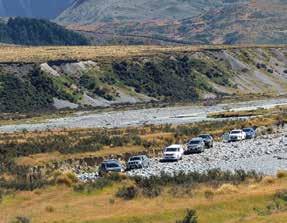

For more information please visit NZ Adventures advert on this page.



Magnesium is one of my most frequently prescribed supplements.
Before I supplemented with Magnesium, I remember getting cramp in my legs and having to get up and jump around the bedroom to unlock




What is

How can Magnesium Triple help?


seized muscles. Magnesium is involved in numerous body processes and can help problems in various body systems especially muscles. I recommend it for cramp, restless legs, PMS, hypertension and heart rhythm problems. I usually recommend that Magnesium be taken before bed for maximum impact on muscles, nerves and to help with sleep.
I have many clients now largely free of night cramps and restless legs. In stubborn cases I also add an antioxidant complex and/or a multi-mineral complex to help with night-time circulation and improve muscle function. It is rare that we cannot get improvements with these problems that can disrupt our sleep.

Unfortunately, many Magnesium supplements are 1 a day making dose experimentation almost impossible.
In my experience the required dosage di ers a lot between people with similar problems. Additionally, many supplements use cheaper lowgrade ingredients which are harsh on the digestive tract. e only real downside of Magnesium supplements is they can cause temporary diarrhoea. However, this mild laxative e ect can be helpful for those that tend towards constipation.
I prefer to use 3 di erent forms of Magnesium. I combine bioavailable marine (seaweed) sourced Magnesium with amino acid chelated Magnesium di-glycinate with Magnesium citrate. I deliberately formulated the capsules to have a dosage range. Normally 2 capsules before bed will su ce but short-term doses of 4 capsules can be used. Please contact me for personalised advice.









Limes and Satsuma mandarins are the rst fruit of the season, with both available from the start of autumn.
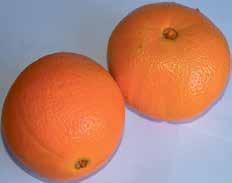
e easy-peeling Satsuma harvest starts in early April and makes up about 25 per cent of New Zealand’s citrus production of about 31,000 tonnes.




“A citrus industry character once said, ‘everybody loves an easy peeler’ and he couldn’t have been more correct. ey’re always a great option for the lunchbox,” says Hall. rough the winter months, from May onwards, lemons and Navel oranges will be available in stores. New Zealand grows a relatively unique type of lemon, the Meyer cultivar, which is common both here and in the United States, but rare elsewhere.
“ e Meyer is the deeper yellow-coloured, rounder lemon that you’ll nd on the shelves. It looks like this because it is a natural cross of a lemon and a mandarin/pomelo hybrid. Amazing avour and available in the middle of winter.”
As spring begins, growers will be picking grapefruit, tangelos and Afourer mandarins.
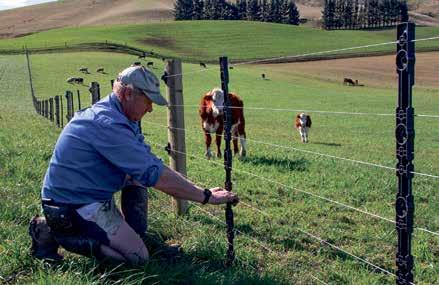

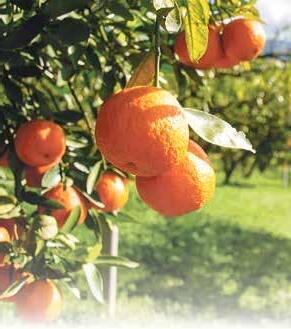
New Zealand’s favourite citrus fruit are now in season and Kiwi shoppers are encouraged to enjoy this important produce throughout the day for a great tasting, a ordable vitamin boost.


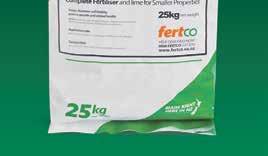
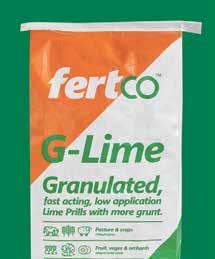
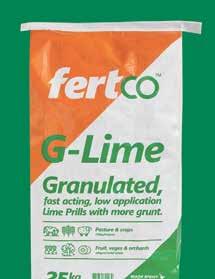
Citrus New Zealand chair Wayne Hall says the 2023 season is o to a great start with a good supply of all locally grown varieties expected in retail markets.



“While damage was sustained on citrus orchards this year following Cyclones Hale and Gabrielle, our growers have worked hard to ensure the citrus crop is available and tasting great.
“A big shout-out to the citrus growers in Northland, Waikato, Bay of Plenty, Tairāwhiti and Hawke’s Bay who have faced these unprecedented challenges.”

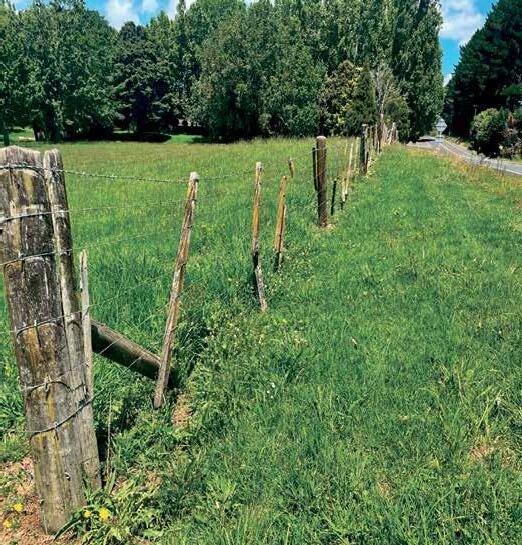
5+ A Day trustee and principal scientist and team leader at Plant & Food Research, Dr Carolyn Lister says the wide variety available means shoppers can keep changing up the citrus they use in recipes.
“New Zealand citrus fruit is packed with vitamin C, which is essential for maintaining a healthy immune system and to help the body ght o infections. With so many varieties to choose from, there’s always something new to incorporate into your diet,” she says.
“When it’s in season, locally grown citrus represents great value for shoppers right through the cooler months.”
e 5+ A Day Charitable Trust has a large database of recipes using citrus fruit for the whānau to try: https://www.5aday.co.nz

George Winters was brought up on a dairy farm and moved into sheep and beef.

He spent his life farming sheep and beef and shearing and fencing as a young man.




Now retired and living on a lifestyle block, of course with a “shed”, George has time to put into his vintage tractors and acquiring more machinery.

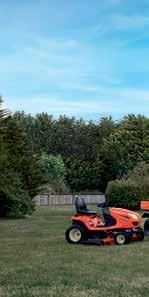

He’s owned his 1961 David Brown 850 Implematic since 1979, which is 44 years of his life, so he is quite attached to it!
“When I needed a tractor myself, I had childhood memories of sitting in the double seat of my father’s David Brown Cropmaster, and I think those memories in uence your choice of machine,” says George.
George already had a Ferguson but needed a second tractor in the winter. e David Brown 850 he saw was reasonably priced, a bit bigger than the “Fergie” and only had only done 2000 hours.

e 850 was retired in the early 1980s when “bigger and better four-wheel drive tractors were more widely available”.





“I kept it for sentimental reasons, and it is still a good second tractor to have around.”


He has a Massey Ferguson sickle bar mower attachment and still uses the 850 to top paddocks and at club crank up days.


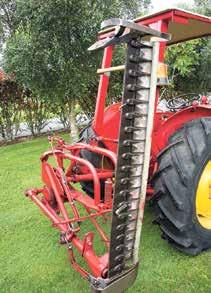
In 2008, George set about restoring the 850 with a view to using it for tractor treks with the Tauranga Vintage Machinery Club.
e four-cylinder, diesel, 35hp tractor has unsynchronized gear transmission with six forward and two reverse gears and is the Implematic model, designed for general farm use. It was made from 1960 to 1965 in England and advertised as “the small tractor with the big performance”.
“I’d put a safety frame and canopy on it previously. Newer changes were to the wheels to make it more comfortable for road trekking. I replaced the 12/28 rear wheels with 13/28s and added proper David Brown mudguards.”
George found some nal drives found lying on a farm, thinking they could be used to make the 850 faster, but discovered one was too rusty to use and they had the same gear ratio anyway.
“I had to give the engine a top overhaul last year when I found oil in the water. e head needed new valve guides put in which was rather costly. Luckily my son is a tractor mechanic and put it all back together for me in his spare time!”
Catherine Fry


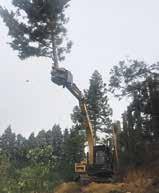

Tauranga’s infrastructure is about to get a big shake-up.
A forum designed to aid a “signi cant” infrastructure de cit in the Bay of Plenty is being launched, and comes with a 10-point action plan to help get the region on track.
e Western Bay of Plenty Infrastructure Forum has involvement from multiple business leaders, local government, and community representatives, who will identify and prioritise infrastructure projects and advocate for investment.

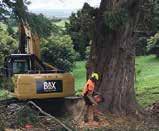

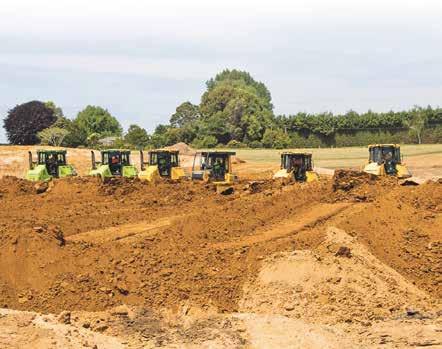
Attending the forum’s launch last month, Finance Minister Grant Robertson says he “whole heartedly” endorses the formation of the group.
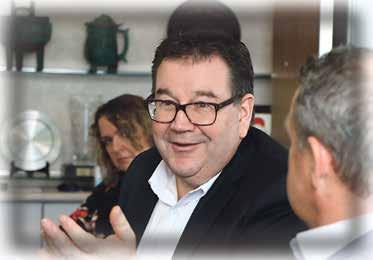

“I can’t emphasise enough how signi cant it is you brought this forum together.







“[ e region] is now clearly at a scale and size now where a plan like this is absolutely essential.”
e Finance Minister acknowledges the “signi cant concerns” in the local infrastructure sector, and highlights the government’s fasttrack consenting process is here to stay post Covid-19.
He also calls the integration of public transport “essential” to making future roading network plans work.
“ ere’s a lot of land you can develop, but the development now needs to be based around the carbon footprint of those cities. Everything you do has to include that as part of your resilience.”
Robertson also acknowledges the key role Tauranga’s port plays in the nation’s infrastructure and supply chain, and is keen on working in conjunction with the port to build an “integrated nationwide supply chain strategy” in the wake of Cyclone Gabrielle.
“Coastal shipping has got to be a bigger part of our resilience strategy.”
e forum says they will play a “vital role” in shaping the future of Tauranga and the wider region, and have released a ten-point action plan detailing their infrastructure vision.
It includes a Port of Tauranga berth expansion, four-lane roading from Hamilton to Tauranga, an increase in homes in Tauriko and eastern suburbs and a 74 to 94 per cent increase in rail tra c. e plan also recognises Hewletts Rd, Hull Rd and Totara St as places with congestion, access, and road safety issues.
e new forum’s chair and Priority One chief executive Nigel Tutt says the Government needs to “look towards” investing in critical infrastructure to ensure the region continues to grow and thrive – and support the wider economic needs of New Zealand.
“ e city has seen a 72 per cent population increase since the turn of the century, yet only the Tauranga Eastern Link has been completed during that time,” says Tutt.
Port of Tauranga chief executive Leonard Sampson echoes this same sentiment.
“ e port is a vital link for Aotearoa’s imports and exports, and without development the country is likely to face future growth constraints. e launch of the Forum is a signi cant step forward to address the infrastructure de cit that Tauranga and the wider region face; we need to act, and we need to act now,” says Sampson.
Tranzliquid Logistics Ltd managing director Greg Pert says long-term funding agreements around roading need to be put in place urgently if the freight and logistics industry is to plan e ectively and meet future demands.


“We’re experiencing signi cant delays in moving freight between Tauranga and the rest of the country due to poor roading infrastructure,” says Pert.
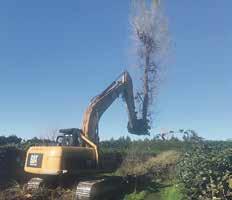
“ e pressures in the future will only get bigger, as the economy and population continue to grow, and demands on the freight network become stronger – urgent action is needed.”
Scott Adams, chair of the Urban Task Force, says Tauranga is the only city in NZ that has not met its housing supply obligations under the national policy statement.
“Tauranga has the worst housing and rental a ordability of any major city. We need to


be investing now and we need the support of central government to create speci c infrastructure strategies for our region,” says Adams.




Darling Group Marketing and their New Zealand avocado supply group Just Avocados aim to begin their export season next month.
Key Asian markets for the 2023-24 season are China and Hong Kong with Korea also playing a role.
Sales and marketing manager Shaun McKone says the group has a continued focus on Asia and will re ne their opportunities in this region for the 2023-24 season to manage quality, supply chain e ciencies, and most importantly grower returns.
TRACEMOL LIFT is formulated to ensure healthy growth and optimum production. It is a unique formulation of 21 different essential minerals, trace elements, electrolytes, proteins, carbohydrates and vitamins. It is blended with Ascophyllum nodosum seaweed extract, which has a very high concentration of minerals, vitamins antioxidants and amino acids.



“Volumes into Asia will be targeted by value and by channel so we can maximise returns for our New Zealand grower base. e timing of our harvest will be based on Peru being out of the marketplace. With Mexico and Peru both having larger crops this year, our timing will be monitored very closely, and could require a more condensed harvest window.”

Darling Group is working towards having on ground representation in Asia soon to assist with market intel and business development.
“Being in the market consistently will support building our channels to market and getting closer to the consumer and mitigate unnecessary costs so that we can extract the best possible value the market has to o er.”
After two di cult seasons and a Western Australia crop that is forecast to be up 140 per cent on last, maximising Asia has added importance.


Shaun says that the 2022-2023 season was challenging with all sections of the supply chain having to overcome factors outside of their control.
“ e unprecedented rainfall was the most disruptive factor and the ow on e ects of not being able to harvest were felt



right through to the market. Low packouts, shipping, and oversupply in Australia all contributed to one of the most di cult seasons in recent memory.”
Despite low industry packouts of class 1 fruit in the 2022-23 season, Darling Group exported over 60 per cent of their total harvested fruit, represented over 50 per cent of the industry export volume to China, and they achieved exporting 35 per cent of their class 1 fruit to Asia versus the industry at 25 per cent.
Shaun says they continue to consistently achieve a greater market share in Asia (25 per cent for the 2022-2023 season) versus total export market share.
Looking forward, Darling Group and Just Avocados are developing market and harvest
plans that have an emphasis on e ciency for the harvest and packing teams.
“We are focussing on the elements that a ect pro tability that we can have control over such as having a condensed harvest plan that in theory will allow higher packouts and return crop.

“We want to harvest larger volumes over a more condensed period and maximise volumes through the packhouse with the aim of ensuring that twothree days from pick date we are loading containers.”
Gains are also looking to be made in shipping. “Shipping in the 2022-2023 season was the worst it has ever been, but we have seen a signi cant improvement since then in terms of frequency and reliability which creates greater opportunity to service customers in line with the market plan.”

e New Zealand horticulture industry is welcoming the early implementation of the Free Trade Agreement with the United Kingdom.

e industry says that for fruit and vegetable exporters, the agreement gives hope for the future at a time when the industry is under immense pressure.
“Growers have been under the pump ever since Covid struck, and rampant cost increases and a succession





of adverse weather events have just added to this pressure,” says HortNZ chief executive Nadine Tunley. “Early adoption of the FTA with the UK provides hope for the future. We thank Government o cials in New Zealand and the UK for bringing implementation of the agreement forward, and delivering on Fit for A Better World – a multi-year project to accelerate the New Zealand primary industry’s economic potential.” Nadine says in the year to March 31, 2022, horticulture exports were $4.6 billion.

A unique electrostatic spray system is generating savings in water usage, chemicals, time and fuel for avocado growers, with superior performance over traditional high volume high pressure systems.

John Harrison, owner of N-Zess (NZ Electrostatic Spray Systems), says Italian Martignani electrostatic sprayers are renown around the world for delivering unparalleled savings in water and chemical usage.


“ e unique electrostatic delivery works on negative and positive attraction All bark, leaves and plants have a positive charge and the spray from a Martignani ES is negative hence it wraps itself around branches and leaves.

“ is coupled with the patented ow meter system and low-pressure, low volume delivery (only 25 PSI) produces the perfect micron droplet to carry chemical to the plant with very little drift and no run-o .
“A traditional pesticide spray unit applies between 1500 and 2000 litres of spray per hectare – while our Martignani sprayer achieves the same coverage with only 300 > 400 litres.


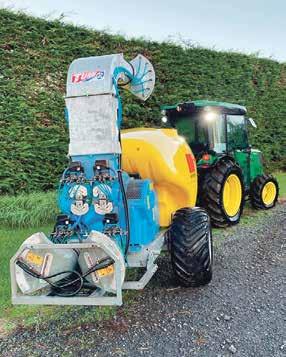
“ e mist sprayers





“Industry, the Government, Māori and research providers have a plan – the Aotearoa Horticulture Action Plan – to increase the value of the whole industry to $12 billion by 2035.
“Among many other things, this plan involves eliminating tari s and non-tari barriers, and developing new markets. at’s why last month’s announcement is a signi cant step in the right direction.”
Onions New Zealand chief executive James Kuperus says it has been a tough year for onion growers, so once again, today’s news is welcome.
“Volumes have been down due to challenging growing conditions in key onion growing areas such as Pukekohe and the Hawke’s Bay. While our



growers are a hardy bunch, they need as much certainty as possible about export markets, to underpin their considerable investment.
“We thank o cials in New Zealand and the UK for burning the midnight oil in order to support export industries like onions, which play key roles in regional economies across our country.”
are extraordinarily e cient enabling savings up to 90 per cent of water, 60-70 per cent time/labour and 30 per cent of chemicals - with 85 per cent less air drift than conventional sprayers.” N-Zess is based at


Palmerton North, but John says the spray service is available to growers across New Zealand.

“As a grower I was looking for a spray system which would be more environmentally friendly and sustainable while achieving


the same or better results than other systems.
“ e Martignani mist sprayer exceeded my objectives – so much so that I wanted to give other growers access to this cutting-edge technology.”
Growers across the country have had a tough year.
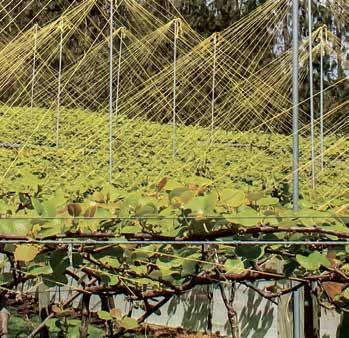

Each year Zespri releases licences to grow the fruit and this year it ran an ascending-price open auction rather than a bid tendering system.
e new licence release mechanism was established this year to provide greater price transparency and meant all growers paid the same price for licence.
In another change Zespri also ran two di erent auctions for the 350 hectares of Sungold on o er.










Two-hundred hectares was restricted to bidders wishing to convert existing Haywood green orchards over to Sungold.
It was feared green growers, who have been more cash strapped in recent years, might not have been able to compete in an open system for gold licence.
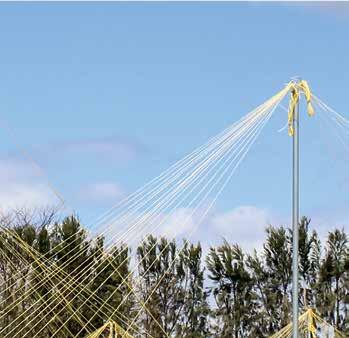
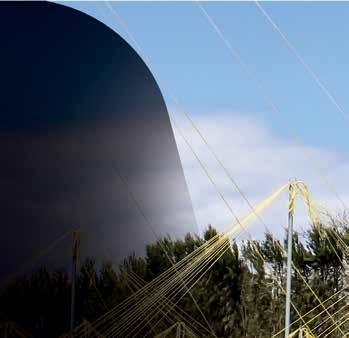







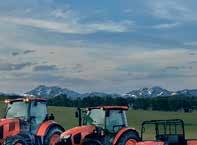

Zespri also wants to reduce the area of land planted in green kiwifruit and having a restricted auction would help the conversion process.
Of the 200 hectares available, 199.5 hectares were released at a price of $678,000 (inc GST) per hectare.
In the second unrestricted pool auction 148.8 hectares of the 150 hectares available was released at a price of $700,000 (inc GST) per hectare. is compares with last year’s median price of $921,150 (inc GST) and a minimum price of $519,740 (incl. GST) for SunGold Kiwifruit licence.
Chief grower, industry and sustainability o cer









Carol Ward says the level of interest in both licence release auctions re ects the strong market demand for SunGold Kiwifruit from customers and consumers. “ ere is strong demand from growers either
building new developments in gold kiwifruit or to transition from Haywood green variety to gold which has a higher yield, more productive and a great response up in the market.”
Zespri also released 150 hectares of RubyRed kiwifruit under the open ascending-price auction.

A total of 125.8 hectares of the 150 hectares available was released at a price of $38,000 (inc GST) per hectare. e category was undersubscribed by 24.2 hectares.

Last year the median price for RubyRed was $147,000 per hectare. Ward said there was some nervousness around growing RubyRed but consumers were really enjoying it.

“We’re continuing to see strong market demand. We’re learning rapidly how to grow it, it’s quite a smaller size on the vine, and it’s a little bit softer so you have to be particular in how to manage it on the orchard.
“We’re excited about the red category. We sit there with our green kiwifruit, our gold kiwifruit and red just complements our portfolio really really well.”
Commenting about the new auction system, Carol says Zespri is pleased with how it went. “ ere was a good level transparency overall. ere are a few things we can do better but in the bigger picture of things it was a much better system and getting some positive feedback from growers on how it worked.”
e licence release results indicate that Zespri corporate revenue as a result of the licence released is estimated to be $212m (GST exclusive). is compares to last year’s licence revenue of $307m (GST exclusive), which featured a larger release of RubyRed Kiwifruit hectares.
Lehmber Singh is up preparing for peak kiwifruit harvest well before the sun rolls over the horizon at his Te Puke orchard. He’s from Chak Chela, a small Indian village home to no more than 1200 people – and grew up at a time where economic development and opportunities for young people was “very low”.
“ ere was hardly any economic development at this time. A lot of people thought moving to another country would be a way to have a better future,” says Lehmber.
It was 1988 when he heard about New Zealand, a country which was seen as “crime free, pollution free, and full of better opportunities”.
His cousin, living in Hamilton, sponsored him to
make the move. Lehmber, fresh o of studying English literature, understood his new home was heavily reliant on the horticultural industry, and became a kiwifruit worker in 1990.
He stuck with the job for more than 15 years, and used the industry as a way to get ahead.
“Coming from India, you have to go for opportunities which can help you secure a future and have a good lifestyle.”
It was a decade and a half later in 2005, when Lehmber began running his own kiwifruit company.
Fast-forward to today, Lehmber has gone from being a seasonal worker to being the owner of a successful business which has up to 80 employees during the peak season, on an orchard located more than 12,000 kilometres from where he was born.
He says the Bay of Plenty horticulture industry has provided him opportunities which “simply wouldn’t be available” where he grew up in the Indian state of Punjab.


“In India, there’s a lot of big, well established businesses which makes it hard to start o .

“I think it was the right decision to move here and start a business. We
love our place in Te Puke and are so grateful for the opportunities here.
“New Zealand has given us all great opportunities.
“My son has recently graduated from university and is a quali ed doctor, and my daughter is on the way to becoming one as well. We’re having a great time here.”
Taylor RiceMyNameisNeilWoodward.
IamadirectorofZ-Contracting-wearefamilyrun business,ourteamconsistsofthree,beingmyself,my sonandmybrother.
Ourorganisationhasbeenestablishedforover18 years.Ihavebeeninvolvedin applyingcropprotection programmeswithinthehorticultalindustrysince1966.
Wespecialisewithinthekiwifruitindustry, We have theequipmenttosprayorchardswithour two Atomsprayers and one recently purchased Tracatom Formula tractor which is also available for mulching and mowing
•Premium knitted windbreak used throughout NZ in commercial and DIY applications

•140gsm, knitted HDPE with fabric eyelets
•Wind porosity approximately 55%
•Green or Black colours available
•Wide range of widths available

•UV stabilised for NZ conditions
•Custom sizes sewn in our Auckland warehouse
MyNameisNeilWoodward.
IamadirectorofZ-Contracting-wearefamilyrun business,ourteamconsistsofthree,beingmyself,my sonandmybrother.
Ourorganisationhasbeenestablishedforover18 years.Ihavebeeninvolvedin applyingcropprotection programmeswithinthehorticultalindustrysince1966. Wespecialisewithinthekiwifruitindustry, We have theequipmenttosprayorchardswithour two Atomsprayers and one recently purchased Tracatom Formula tractor which is also available for mulching and mowing

Our Atoms aresetupwithradarspeedsensors,this combined with fullyautomated sprayer controllers and three nozzle ringsenhancesapplicationef ficiency and accuracy.
We also useaquadbikeforstripweedspray applications.
Weholdallcertificatesneededtomeet Globalgap compliance.
Welookatallchallengestohelpensureweprotect yourcropwithexcellence.
Our Atoms aresetupwithradarspeedsensors,this combined with fullyautomated sprayer controllers and three nozzle ringsenhancesapplicationef ficiency and accuracy.
Kiwi Pollen’s ATV
Mounted PollenAid®
We also useaquadbikeforstripweedspray applications. Weholdallcertificatesneededtomeet Globalgap compliance. Welookatallchallengestohelpensureweprotect yourcropwithexcellence.
Wet Sprayer is a new and improved broadcast pollen applicator with proven performance, design and adaptability.

Tocontactus: Phone:021907621 E-mail:zcl@zanadu.co.nz

Limited supply - call now
216PongakawaBushRoad TePuke
Tocontactus: Phone:021907621
For specifications, price and availability Tel: 021 0894 2040 or email: admin@kiwipollen.com
E-mail:zcl@zanadu.co.nz

warehouse
•UV stabilised for NZ conditions

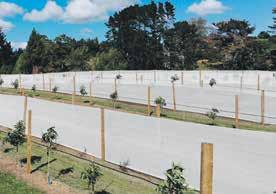
If you’re already impressed with the unique avour and vibrancy of Zespri’s RubyRed kiwifruit, why not go a step further and try it in cider form?
is crimson coloured fruit hit shelves late last year with people eager to get their hands on it.

Husband and wife duo, Simon and Rowena Pearce who own and operate
a Te Puna based cidery, couldn’t wait to experiment with red kiwifruit either.



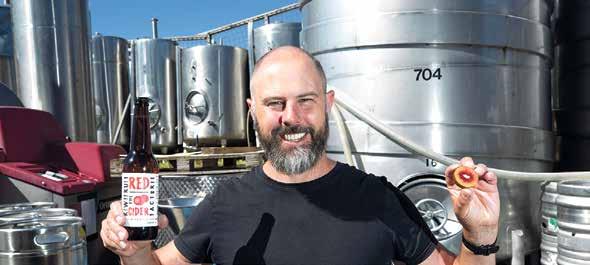

“We’ve been hanging out for that since we heard about it and we have a few contacts and we managed to get our fruit last year for the rst trial,” says Rowena.


Sourcing their kiwifruit from Apata in Aongatete, Rowena and Simon were thrilled to start pouring out
their very own Red Kiwifruit Cider last October.
“We’re about a year behind, so what you’re tasting now is the fruit that came in last year,” says Rowena.

As head cider maker, Simon says he likes to see “how far you can push the boundaries with fruit.”
With their Red Kiwifruit Cider, the kiwifruit is crushed along with cider apples. “ ey are co-fermented together, and the ferment goes for about three weeks, so it’s just a nice
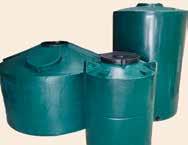
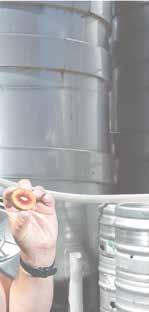
core ferment just to keep those tropical avours in.”

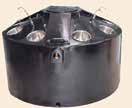
Simon and Rowena originally come from a wine background, so crushing reds must give a sense of nostalgia.
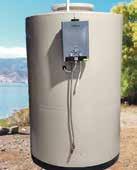
“[Red kiwifruit] is a really cool colour when it ferments. It’s almost like a uro red,” says Simon.
He says peoples’ responses to their Red Kiwifruit Cider is “pretty unusual” at rst. “ ey didn’t really know how to get it.” Yet, in the past couple of months it’s gaining popularity.
“It’s just come into its own,” says Rowena.
“It’s unique. It’s really hard to describe. It’s tropical almost like a guava, but it’s got some kiwifruit notes in there as well, and of course it’s blended with apple so you’ve got the apple and the kiwifruit thing going on,” says Simon. is year’s red kiwifruit blend is not far from the glass either.
“We’re releasing this year’s one in about two weeks.”
Simon says come and try it!
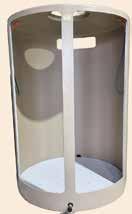



In Waikato, Bay of Plenty, and Coromandel, landowners can leverage ‘environmental bene t lot’ rules to maximise their rural property’s potential while supporting ecological conservation.


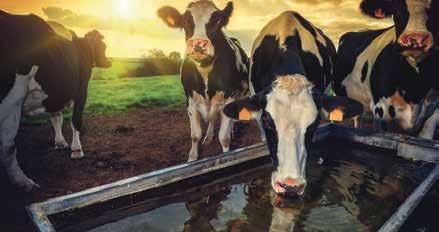
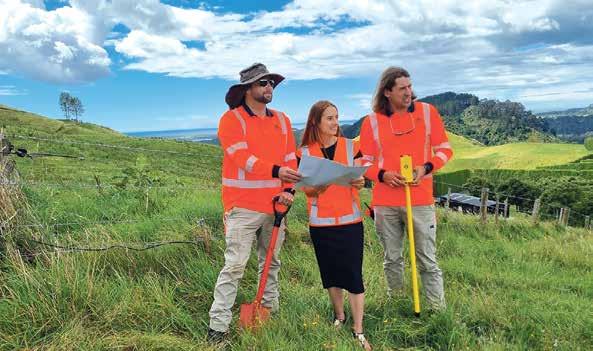
Environmental bene t lots o er a unique opportunity for landowners to create additional lifestyle blocks on their property by setting aside features such as native bush, stream margins and even small wetland areas.
ese eco-friendly subdivisions foster a win-win situation for both landowners and the community, paving the way for sustainable development in an increasingly eco-conscious world.



Many councils across the central North Island of New Zealand, including Western Bay of Plenty, Matamata Piako, Whakatane, Rotorua Lakes, Waikato, Hauraki, ames Coromandel, Waipa, South Waikato, Otorohanga, and Waitomo have speci c rules and regulations that govern the subdivision process.




Understanding the requirements is crucial for landowners seeking to create sustainable subdivisions. Engaging with a subdivision specialist company that is familiar with regional guidelines ensures compliance and streamlines the path to environmentally responsible development. Your project manager will work with various experts, such as ecologists, land surveyors, subdivision planners and engineers to maximise the potential of your land while ensuring compliance with regional rules and regulations. Together, these professionals can identify and quantify ecologically signi cant areas on a property and explore options for land restoration. ese can
include planting native trees, fencing o stream margins, pest control, and restoring wetlands for water quality improvements.

To qualify for a subdivision the ecological feature must be well maintained and protected in perpetuity. is is enforced by a covenant registered on the land title following the subdivision and often backed up with an ecological management plan which outlines speci c measures to protect and enhance the environment, from fencing and pest control to revegetation and ongoing maintenance. ese measures lay the foundation for long-term environmental stewardship.
Understanding the plethora of rules relating to subdivision can be a mission. It is important to partner with a specialist subdivision company that is experienced in these developments. Often farms can contain several ecological features which provide opportunities either separately or combined. Careful management and often staged developments are required to obtain the best development opportunity from your features.
Once the necessary consents are obtained from your District Council, landowners can bring their sustainable subdivision vision to life. e planning of the subdivision, registration of titles to your new sections with Land Information NZ, and ongoing support and guidance throughout the development process are all handled by a project manager from the specialist subdivision company. All you need is the land and potential ecological features to leverage the opportunity and create a sustainable, pro table subdivision. If you think your property may have what it takes, we are happy to give you the time to discuss the full potential of your land so feel free to give us a call and discuss your situation.

Creating sustainable subdivisions is essential for preserving the environment and promoting responsible development.
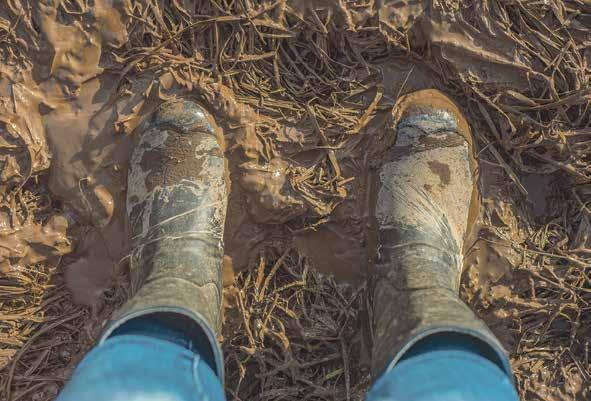

On a daily basis our businesses rely on our response to nature – but, boy, that resilience has been tested by seemingly unending rain!
e rst two days of May validate this with the amount of rain we would traditionally get in the month of May ie 300mls falling in the rst two days at the farm!
Now if that rainfall was isolated it would be wet, but we would still be able to get stock and machinery onto paddocks, but the reality is that – after recent deluges – our paddocks are saturated meaning that any movement (stock or machines) negatively a ects our pasture.
At the yard we have had 86mls of rain to date this month – equalling April’s total in just two days. is takes the rainfall from 1 January 2023 up to 687.5mls.
is time last year we had 481.5.


At the farm we have reached 315mls in the rst ve days of May – more than doubling April’s rainfall. We are sitting on 1895.5mls for the year to date, in comparison to last year 614.5mls for the same period.
ankfully the weather forecasters are predicting that the weather pattern will turn to El Nino with less northerlies and easterlies and more westerlies raising the potential for a complete ip to what we are experiencing now – a dry spring and summer. Let’s hope they are right!

e soil temperatures are up and down. In the rst week of May, when there was no rain around, we had an average temperature of 14.2 degrees C. In the second week, it was 18.5 degrees C. Last year it was 14.8, so quite a di erence!
Rain and warm temperatures mean that grass is still growing – so, pugging aside, our stock should be well fed with reserves building up for winter.



Despite the Government’s assertion that in ation is sitting at just under eight per cent, as contractors and farmers, our cost to grow grass has increased 17 per cent year-on-year. is equates to an increase of 34 per cent over the last two years.




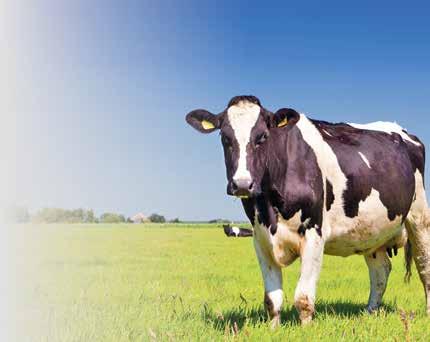
Our ability to grow and farm o grass is New Zealand’s pièce de resistance – the edge we have over much of the world’s land-based industries. But that has come under pressure with the spiralling cost of everything associated with the growth of good pasture – cultivation, seed, sowing, fertiliser and spraying. To a lesser or greater extent all farmers will be feeling this ‘pain’.
Notwithstanding, farmers need to be spraying new grass after maize or pasture renovation, managing weeds, and resetting soil balance with strategic applications of sulphur, potash and nitrogen to get new pastures established. We also need to keep an eye out for pests like Army Caterpillar amongst winter crops like brassica.

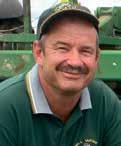


Both of these factors are red herrings to anyone who depends

on transport for their living. e Government has signalled that the fuel surcharge will return spiking the cost of petrol and diesel – all costs which will, of necessity, be passed on to every product and every service.
And the rejig of incentives to buy electric vehicles at the cost of ‘working vehicles’, eg: utes, ignores the fact that utes are not just a vehicle of choice but an absolute necessity with no alternatives for tradies, transport operators and farmers – to name a few. We simply don’t have an alternative – there aren’t electric vehicles which can do the job and, even if there were, the required recharging stations do not exist.
Electric vehicles are a viable alternative, in the main, for people who live in urban areas with access to recharging, whose livelihoods do not rely on driving beyond the city limits and who have public transport options.
e NZ-UK free trading agreement will come into force at the end of May, removing most tari s on exports to the UK earlier than previously
signalled. e saving to NZ exporters is around $37m per year. While apples, butter and cheese and beef and sheep meat aren’t immediately included they will progressively become tari free over 15 years.


Living on the job is a farming reality which has its blessings but also its downsides because, in the peak of the season, it is often di cult to get away from all the challenges which face us. ankfully, the peak is behind us so most of us can see a time in the near future when we will have more time in each day to spend on ourselves and our families. It is vital that we take that time to re-energise the batteries.
So, whether it’s an hour, a day or a week, make that down-time worthwhile; get o the farm, relax and revitalise –hopefully with some nice warm, dry weather!
Fertiliser sales this autumn are well down on this time last year with the primary reason being lower incomes and higher expenses.
Fertiliser can be withheld, particularly when there is an abundance of feed and favourable growing conditions, without any immediate impact on feed budgets, however the focus now should be on spring.

In well managed situations, the feed on hand in early May has an important in uence on the feed available in the second half of September, the time when demand is high and peak pasture growth is yet to arrive.
Mature pasture can be carried ahead by lengthening the intervals between grazings. Successful farmers will often graze no more than one per cent of the available area daily during June and July, prior to lambing and calving.
Until recently there was an industry wide attitude that lower covers during winter could be addressed with the application of synthetic nitrogen. at is steadily becoming outdated as nitrogen applied during winter is one of the reasons for unacceptably high Nitrate N levels in groundwater. e price of nitrogen fertiliser products means the cost of the extra feed grown is currently as great, or greater, than bought in feed which has a higher nutritional value.
Comparative data shows that although farms applying nitrogen during winter experience earlier and stronger spring growth, they grow signi cantly less during late spring and summer than those where no nitrogen was applied during winter.
Winter is the time of rest and recovery
for pasture plants. Having 90 days where there is no demand for extra above ground growth allows root systems to develop.

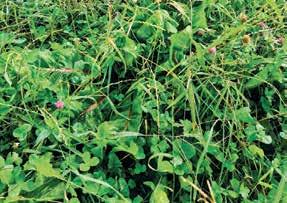
A deeper and larger root base ensures stronger growth during the next growing season. e same rest and recovery phase is just as important for animals and people.
When changing to a lower synthetic N input system bear in mind that removing anything from an existing fertiliser programme will lead to lessened growth unless it is replaced by an input that provides as much energy. ere is somewhere between 5000kg –15,000kgN/ha in the top 15cm of pastoral soils and only a small fraction of that needs to be made plant available for maximum growth over winter.
proven means of limiting calcium/magnesium related metabolic disorders in spring.

Part of its e ectiveness is due to the increase in plant energy levels, particularly important in late winter and early spring aided by the inclusion of boron which helps build plant sugars.
Properties where DoloZest is applied annually markedly reduce the amount of other magnesium supplementation. Pastures normally contain 0.22 per cent – 0.25 per cent magnesium a level at which well fed cows receive their required daily intake. Mature pasture, 3500kg+ DM/ha, also contains much of the long bre necessary for good rumen function, without which minerals and vitamins are not fully utilised.
Keeps feed or fertiliser dry
Winch system for easy access
Canvas or steel cladding options



Soil biology is is easily achieved by increasing biological activity in the soil. Adding calcium creates the conditions which favour bene cial microbes and earthworms, and only a small amount in the form of lime is enough to make a di erence. In the longer term, the synthetic nitrogen can be adequately replaced by nitrogen xed by clover and direct from the atmosphere, both free of charge with minimal leaching losses.
Save time and cut waste

0800 262 788

Functional Fertiliser rst introduced DoloZest in 2003 as a soil improver that improved physical soil structures and increased the rate at which nutrient was cycled.
info@slidingroofs.co.nz

Based on Golden Bay dolomite it has the added bene t of supplying maintenance magnesium, an essential input on nearly all dairy farms and is a



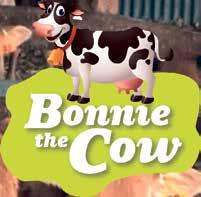
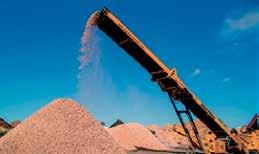

www.slidingroofs.co.nz



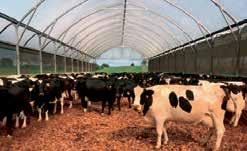

For over a

e rural community is paying tribute to a man described as “highly knowledgeable” and “well-respected”.
David Malcom Law passed away peacefully at dawn on April 22, with his wife and three children by his side.
He was 64 years old.
David was a loving husband to Susanne (Sue), an amazing dad to
Nicholas, Gena and Stacey. Fatherin-law to Rachel, Phil Wild and John Cameron. Poppa to Zoe and Robin. ose who knew him says he was a true visionary and remarkable man, taken too soon.
e team here at Coast & Country News will miss David’s regular contributions to our publication. He was a monthly columnist for many years.
He was a well-respected and highly
knowledgeable person in the farming sector with his ability to inform farmers about soil biology and e uent pond biology.



His legacy ‘Total Replacement erapy’ will live on through Ron McLean at Kiwi Fertiliser.
David was a visionary – seeing and, nally, realising the potential Total Replacement erapy has for land-based industries.
He was a zealot for an approach which perfectly aligns with the cry of global environmentalists – that we must work with and not against nature and that we need to reduce methane and synthetic nitrogen to improve soil,
plant and animal health.


At the same time, the ‘8 step’ Total Replacement erapy programme improves the land’s ability to withstand extreme weather events.
People have also described David as a man ahead of his time – “after years of dedication he was nally on the brink of seeing this concept take o when he died”.
David was a regular contributor to Coast & Country News over the years.
David’s bequest to agriculture, TRT, has the potential to transform this country’s land-based industries –improving animal and plant health and performance. It is a bequest which, sadly, will now be realised without his leadership.
Ravensdown has con rmed the establishment of a new commercialisation entity – Agnition.



A subsidiary of Ravensdown, Agnition’s mission is to ignite the industry with the innovations that farmers and growers need.


It will build, grow and invest in world-leading Ag-IP and innovations, like EcoPond and ClearTech, and turn them into valued products and solutions that can be practically used on-farm to combat climate change, and engender enhanced productivity.
CEO Garry Diack says Agnition is a structural response to the company’s strategy - Smarter farming for a better New Zealand.







We specialise in high quality, mesh and PVC covers to suit trucks, trailers and farm bunkers. All of our covers can be easily operated from the ground using a silky smooth cable system, eliminating health and safety risks.


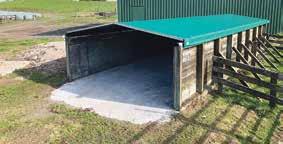
“We have had an impressive trackrecord of recognising, researching, and bringing to fruition technologies and services that enhance our shareholders’ abilities to interconnect precisionbased performance with long-term sustainability.
based Jasper van Halder.
“ e focus is now on taking innovations to market faster, getting them on-farm and providing a return on investment for our shareholders.”
Garry con rmed Jasper van Halder’s appointment as Agnition CEO and that he will have responsibility for a portfolio of existing Ravensdown investments, including C-Dax Agricultural Solutions, Cropmark Seeds, Southstar Technologies and Analytical Research Laboratory.


Jasper and his new team also have a mandate to invest in future nutrient and soil health innovations. Originally from a farming family in the Netherlands, Jasper brings a wealth of commercial experience to the role.
As a strategy consultant for McKinsey & Company, he has international business experience across multiple industries, including agriculture, advanced technology, and retail.
alliances and advisory constraints that dominate NZ agriculture. e National Australia Bank discovered many years ago that the most pro table farms had a common theme. at was organic
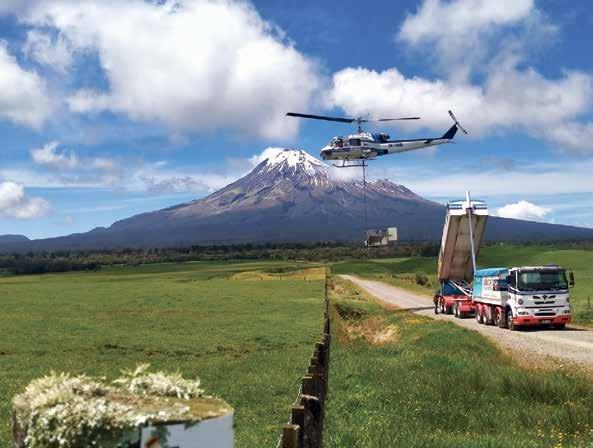

Carbon and pro tability, sustainability, reduced nitrogen applications, and reduced greenhouse gas emissions all go hand in hand. ey are inseparable. We at Kiwi Fertiliser
fertilisers we can nd. Where possible, we mix our fertilisers from lime through to nitrogen with a carbon source, Kiwi Carbon Blend. KCB is a win-win for Kiwi Fertiliser and the farmers
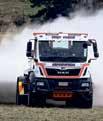



About two-thirds of world carbon emissions come from burning fossil fuels.

Over recent time, carbon dioxide in the atmosphere has increased from 280ppm to 400ppm.
It needs to go back to 280-350ppm to help mitigate climate change.




Although NZ’s contribution to the world’s perceived problems is negligible, farmers and growers can improve their individual bottom line by increasing carbon sequestration independent of any added income stream from selling carbon credits. at is an optional extra.
When supervising dairy farms, some years ago, I noticed the fertiliser regime was not meeting expectations. Production stagnated, weeds and toxic chemicals had increased while animal health deteriorated. Pro tability su ered. We signed up to a nancial programme where the inputs and outputs were analysed on a cents/kg basis, e.g., feed grown, feed eaten, milk produced, stock sold etc.
e analyses showed quite clearly that the less feed that was bought in or supplement made, the greater the pro t. Research also shows the more the cows diets stray from pasture, the higher the greenhouse gas emissions. e more grain, PKE and other inputs they eat, the less healthy the milk and meat.

From this nancial programme, the foundation of Total Replacement Programme evolved, leading to a huge drop in the application of arti cial nitrogen.
Please note that nitrogen and carbon are diametrically opposed to each other. It is so easy to cut back and improve both pro tability and carbon

sequestration.
Farming becomes a joy as it used to be.
e key is to match feed supply with feed demand. Increase the number of balance dates you have from twice a year to many times more. Keep stock numbers in closer balance with feed grown.
Matching supply and demand means choosing a stocking rate that suits the pasture growth. is reduces the need to supplement. ese factors drive pro t. Identify the factors that increase pro t; not those that increase production. Once you do that, optimum production follows. Chasing production always increases costs, but not necessarily pro t.
Putting this into perspective, a farm I supervised that was most like LUDF in Canterbury produced an average annual ROI (return on investment) of 8.5 per cent.

e best LUDF ROI was 6.4 per cent. NZ average was 2-3 per cent.
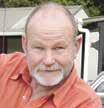
Our worst was 6.5 per cent when the farm seriously ooded in 2004, and our best was 12.8 per cent in 2008.
Nitrogen use fell to 30kg/ha bu ered with carbon. LUDC N use was 8-10 times more, unbu ered meaning much of it would have been lost to the ground water supply and the atmosphere.
Our pro t was double that of LUDF. It also became very apparent most of the farmers that joined the nancial program also ran alternative fertiliser programs.
ey arrived at their decisions independently, being spread all around NZ. ey were free-thinkers, unencumbered by the commercial

curriculum vitae
CV’s THAT STAND OUT. Don’t let your C.V. get lost amongst all the others. Get the WOW factor.
A C.V. For You can provide you with a
June 8
Historical NZ Herbalists, 7pm talk, Wesley Church Hall, 13th Ave, Tauranga. See letslearn. nz/tauranga-herb-society

June 11
Hamilton Bonsai Club
AGM & Sale, 2-4pm, St Francis Church Hall, Hillcrest, Hamilton. hamiltonbonsai.co.nz
June 12
Rotorua Botanical Society
AGM, 6pm, guest speaker Matt Renner, ex-Royal Botanic Gardens, Sydney, DOC o ce, 99 Sala St, Rotorua. All welcome.

June 12-July 17
Matariki Dish Challenge and Food Trail, Rotorua. matarikidishchallenge. co.nz
June 14
Free Home Composting Workshops, 12noon1pm, Recycling Centre, 20 Te Ngae Rd, Rotorua. See tinyurl.com/2s3nxr9f
Free Worm Farming Workshop, 1-2pm, Recycling Centre, 20 Te Ngae Rd, Rotorua. tinyurl.com/2s3nxr9f
June 15
Kids Night Walk of Discovery, 5-8pm, Ohope, family pass
$12.81. Repeats June 29. See tinyurl.com/ mrhkvd6n
June 16-July 26
Matariki Waikato Festival. See matarikiwaikato.nz
June 17
Matariki Market, 9am-2pm, e Historic Village, 17th Ave West, Tauranga. See theincubator.co.nz
Free Home Composting Workshop, 10-11am, Recycling Centre, 20 Te Ngae Rd, Rotorua. See tinyurl.com/2s3nxr9f
PULLETS


Farmers, growers and other businesses a ected the cyclones will have one less thing to worry about following the Government’s announcement on depreciation roll-over relief.
“It’s a repeat of measures that Federated Farmers advocated for in the wake of the Hurunui-Kaikoura earthquakes.
June 17
Free Worm Farming Workshop, 11am-noon, Recycling Centre, 20 Te Ngae Rd, Rotorua. See tinyurl.com/2s3nxr9f

June 18
E-waste Collection, 9-11am, Cambridge High School. See urbanminers.nz
June 22
Banff Centre Mountain Film Festival, 7.30pm, Holy Trinity, Devonport Rd, Tauranga, $25. See tinyurl.com/2esk45p7
Sculpture Park & Arboretum, 7.30pm, talk by John Wakeling, Wintec classroom, Hamilton Gardens (Gate 2), visitors $5. Ph Carmel 07 855 3404.
June 24
Banff Centre Mountain Film Festival, 7pm, Great Lakes Centre, Taupō, $25. See tinyurl.com/2esk45p7
June 24-July 2
NZ Garden Bird Survey. One hour of your time for citizen science. See tinyurl.com/5hxbtnu9
June 27-July 2
Creative Fibre Exhibition, 10am-4pm, Cambridge Town Hall, $2. See tinyurl.com/3fute5j6
June 29
Creative Fibre Craft Fair, 10am-4pm, Cambridge Town Hall, $5.
Kids Night Walk of Discovery, 5-8pm, Ohope, family pass $12.81. See tinyurl. com/mrhkvd6n
Banff Centre Mountain Film Festival, 7pm, PWC Lecture eatre, Hillcrest Rd, Hamilton, $25. See tinyurl.com/2esk45p7
June 30-July 16
Taupo Winter Festival. taupowinterfestival.co.nz
Email: editor@coastandcountrynews.co.nz
free event
under $50
“We’re very pleased the government has seen t to do the same for businesses hit by the severe weather events in January and February this year,” says Federated Farmers National Board member Toby Williams.
In 2011, the Government amended the Income Tax Act to provide taxpayers with property damaged or destroyed by the Canterbury earthquakes with the ability to defer a depreciation recovery income liability when property was destroyed and replaced using insurance settlements.
Similar legislative change happened after Federated Farmers wrote to the then Minister of Revenue after the HurunuiKaikoura earthquakes.
Where a depreciated insured asset is
Due to population growth, the Government recently changed the rules around building on extra space you may have on your residential property.
ese changes mean there are situations where it could be possible to build a new home on your section without the need for subdividing and/ or resource consent.
destroyed there is often depreciation recovered, especially where the asset is insured for replacement cost. is depreciation recovered, which is taxable, is a reversal of depreciation previously claimed.

“For taxpayers a ected by the Auckland storm and the two cyclones this could have resulted in a big tax liability, which is the last thing that hard-pressed farmers and other business owners need at the moment,” says Toby.
“ is is great news for people looking to bene t from the extra space they have on their property, securing their future with an investment property without the large costs of subdividing,” says Highmark Homes BOP managing director Ryan Hunt.
“We’re o ering to build a brand new three bedroom, 103m2 home from only $299,000 on your backyard
“ is seemingly dry technical change will be a relief to people and will make a di erence to the recovery.”
Normally, the receipt of insurance proceeds for a destroyed business asset gives rise to depreciation recovery income. Rollover relief will defer the recognition of this income for tax purposes, provided there is a commitment to rebuild or replace the destroyed buildings or plant.
As an additional feature of the relief measures Revenue Minister David Parker has proposed there will be no requirement that replacement buildings be located in the same region.
Farmers and horticulturalists whose crops are uninsured should be able to separately claim deductions under existing legislation for the residual book value of destroyed trees and vines, and their removal costs, says the Minister.
As is always the case with weather events, the loss of uninsured assets (buildings, plant, crops vines and trees) is deductible. Inland Revenue will provide information on its website about the rollover relief.
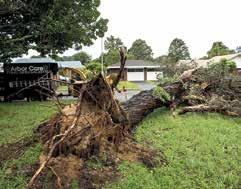

or on your farm –depending on the speci c requirements of your site. We believe this could be a great option for people looking to build a quality new home in a cost-e ective way.” Highmark Homes was founded in 1965 by Bob Hunt and is now run by his son Ryan, making it one of the longest running building companies in the Bay of Plenty. e team at Highmark Homes is dedicated to building homes they can be proud of and o er a no-obligation, free site evaluation, providing expert advice on the best way to maximise any property.
For site visits and further information, call Sally on 027 536 1003 or visit highmarkhomes.co.nz/ region/bay-of-plenty/





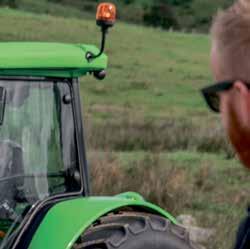




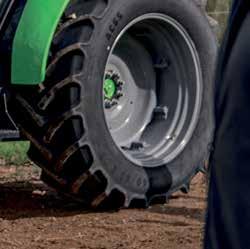
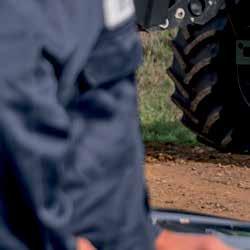








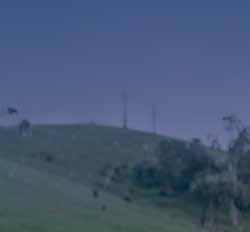
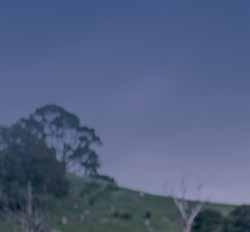
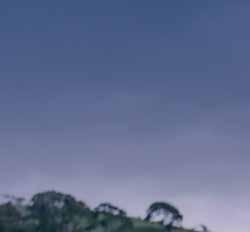








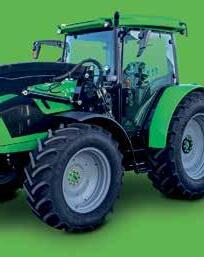















Stellar,


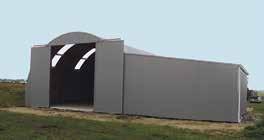
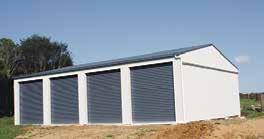








e face says it all!
Lachie,
